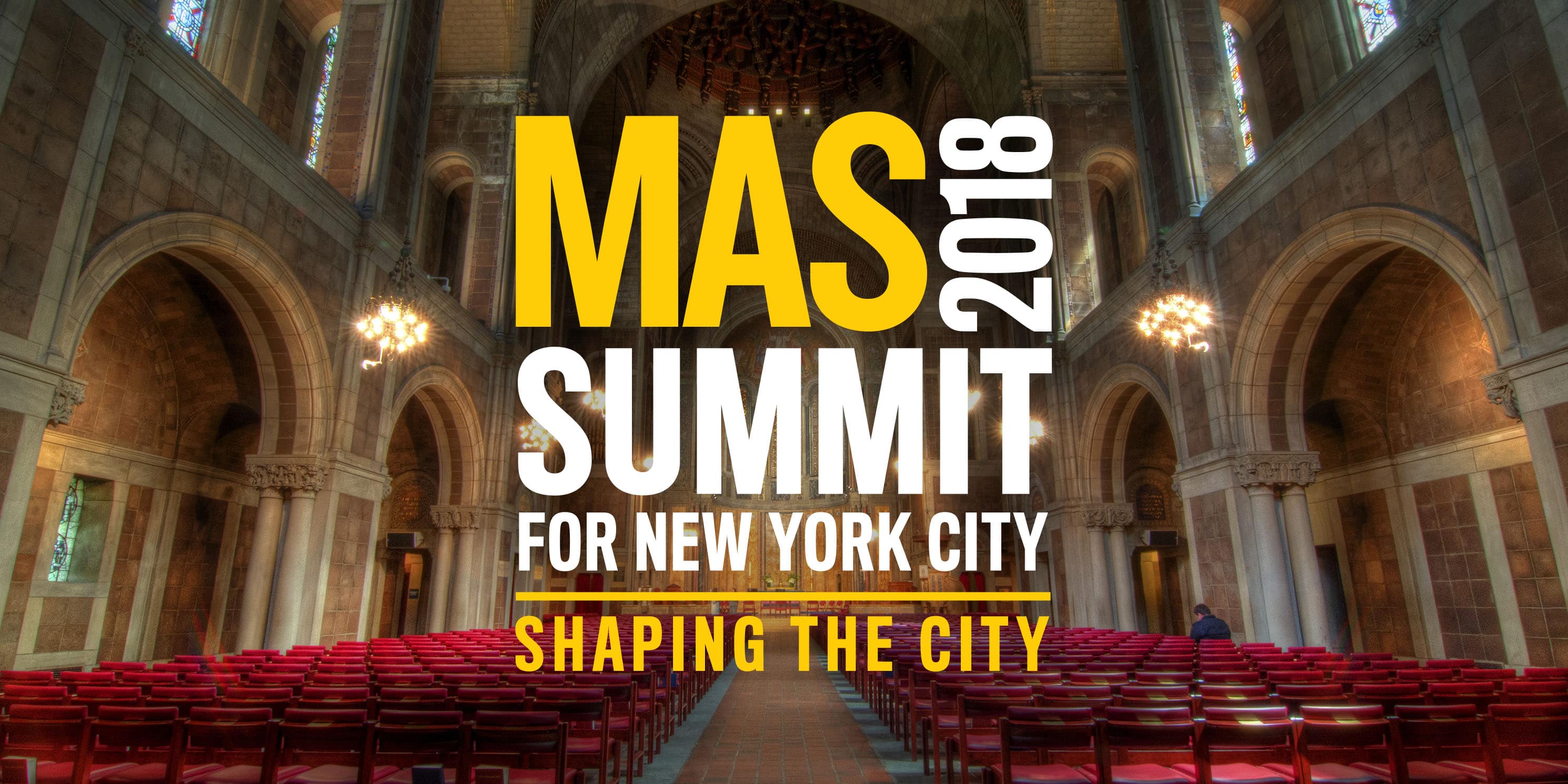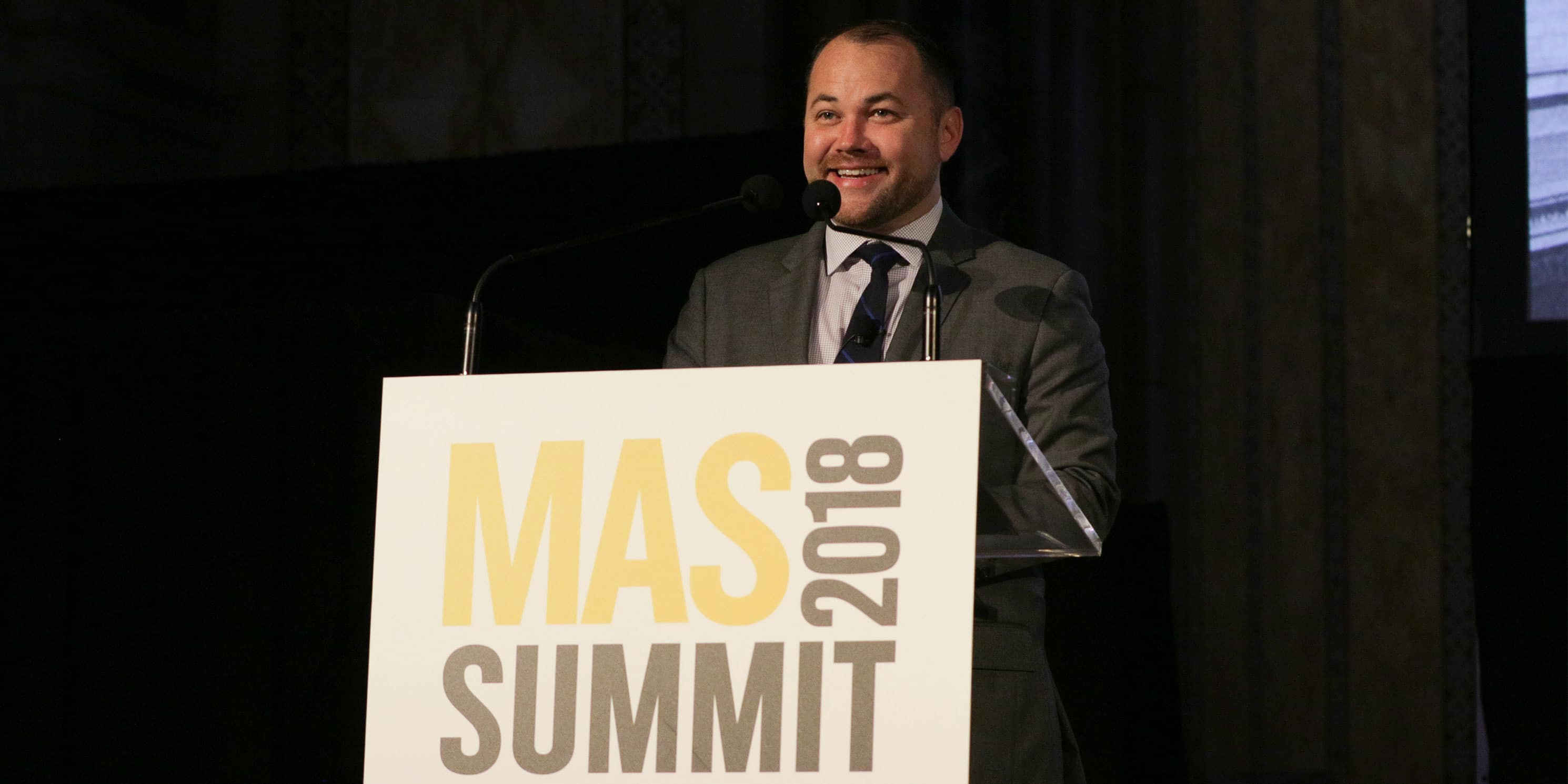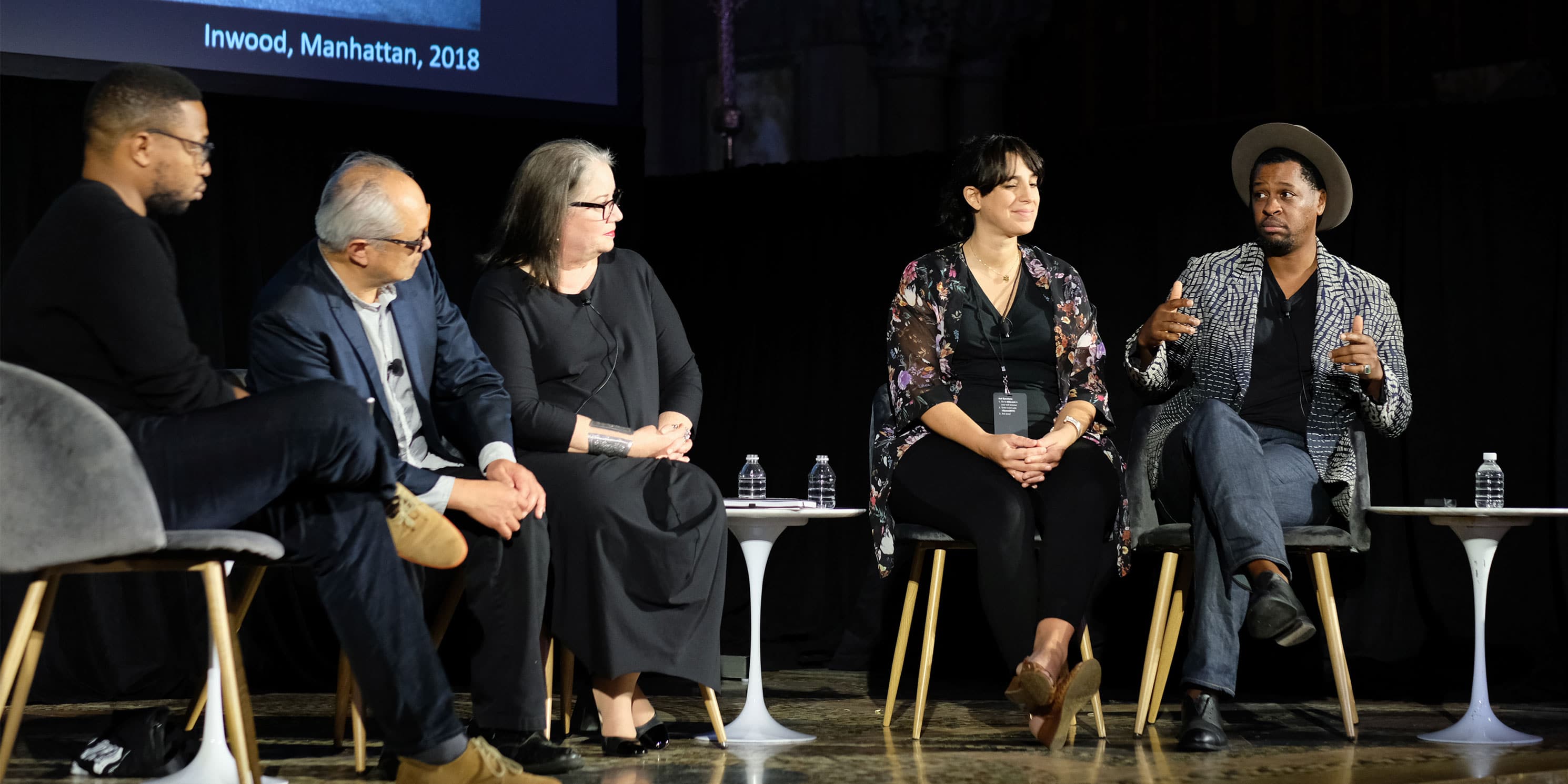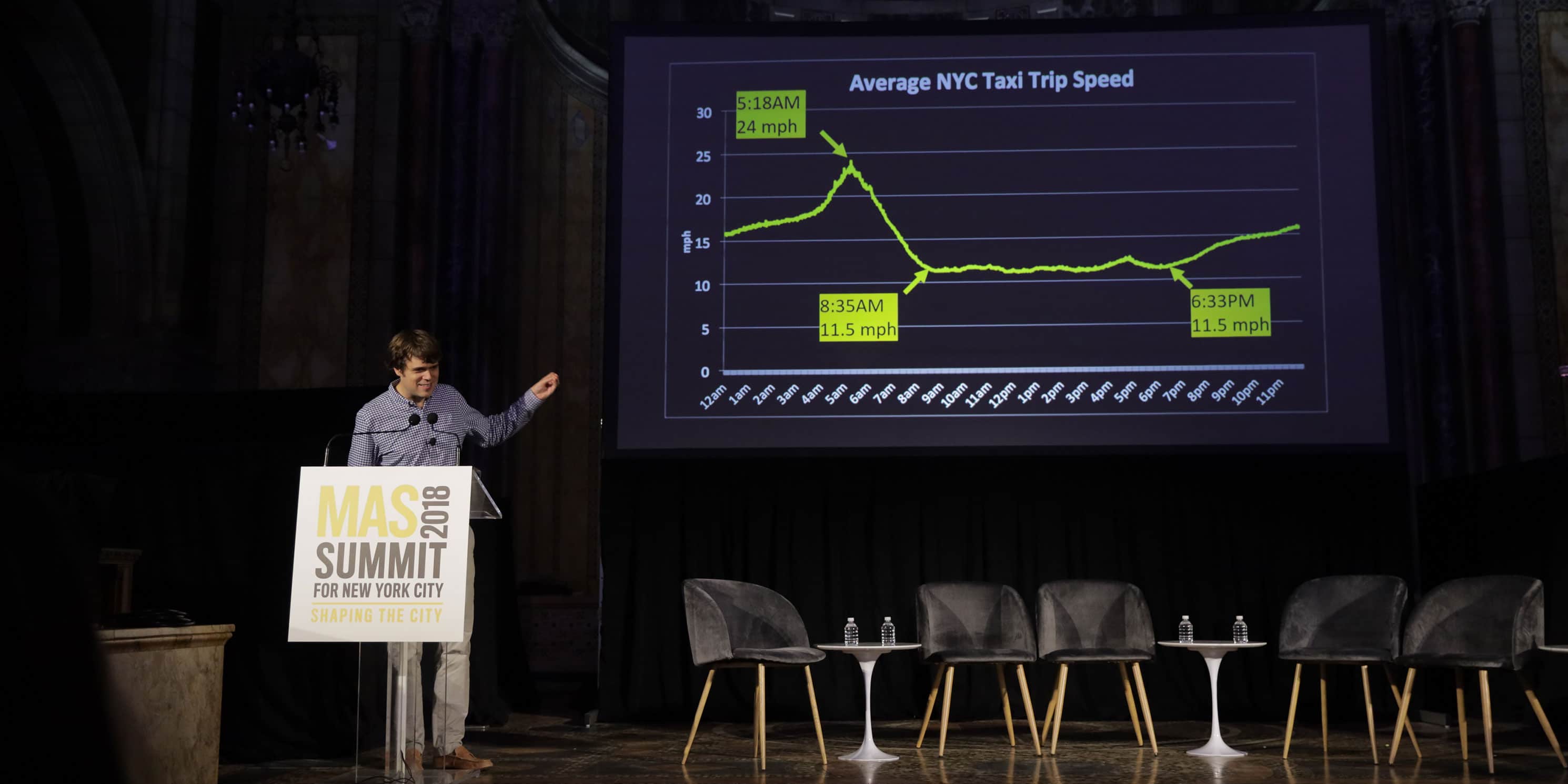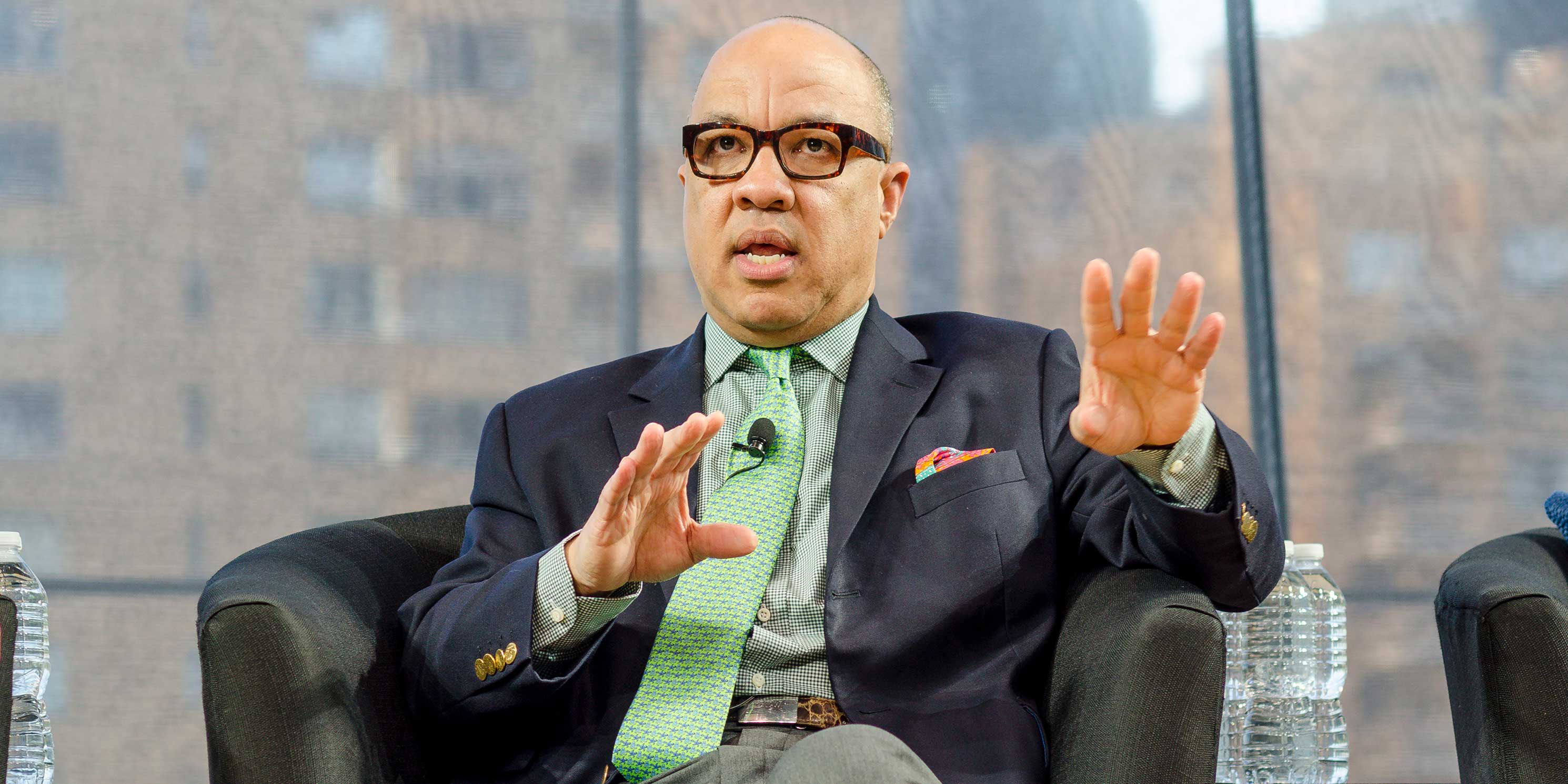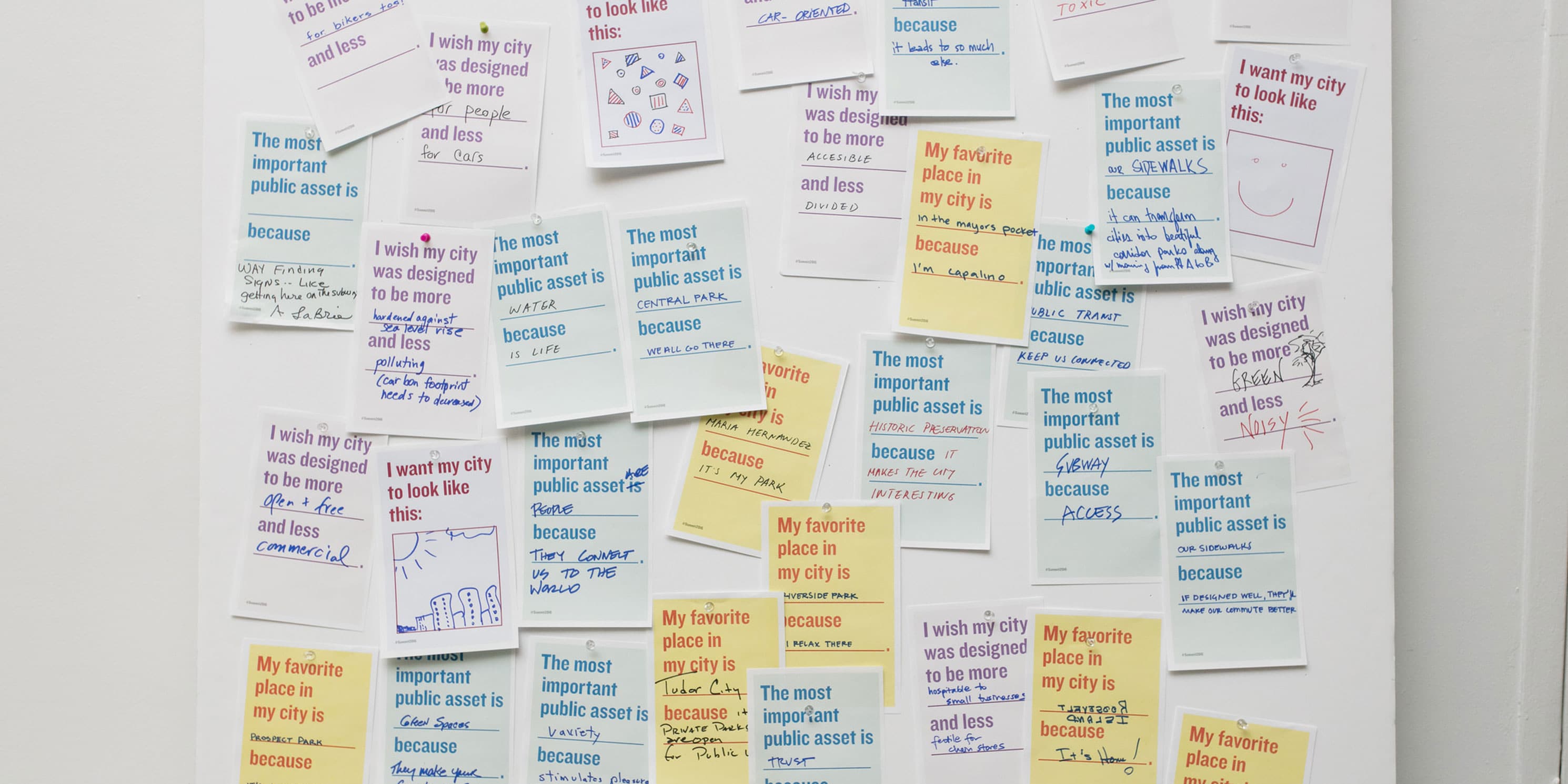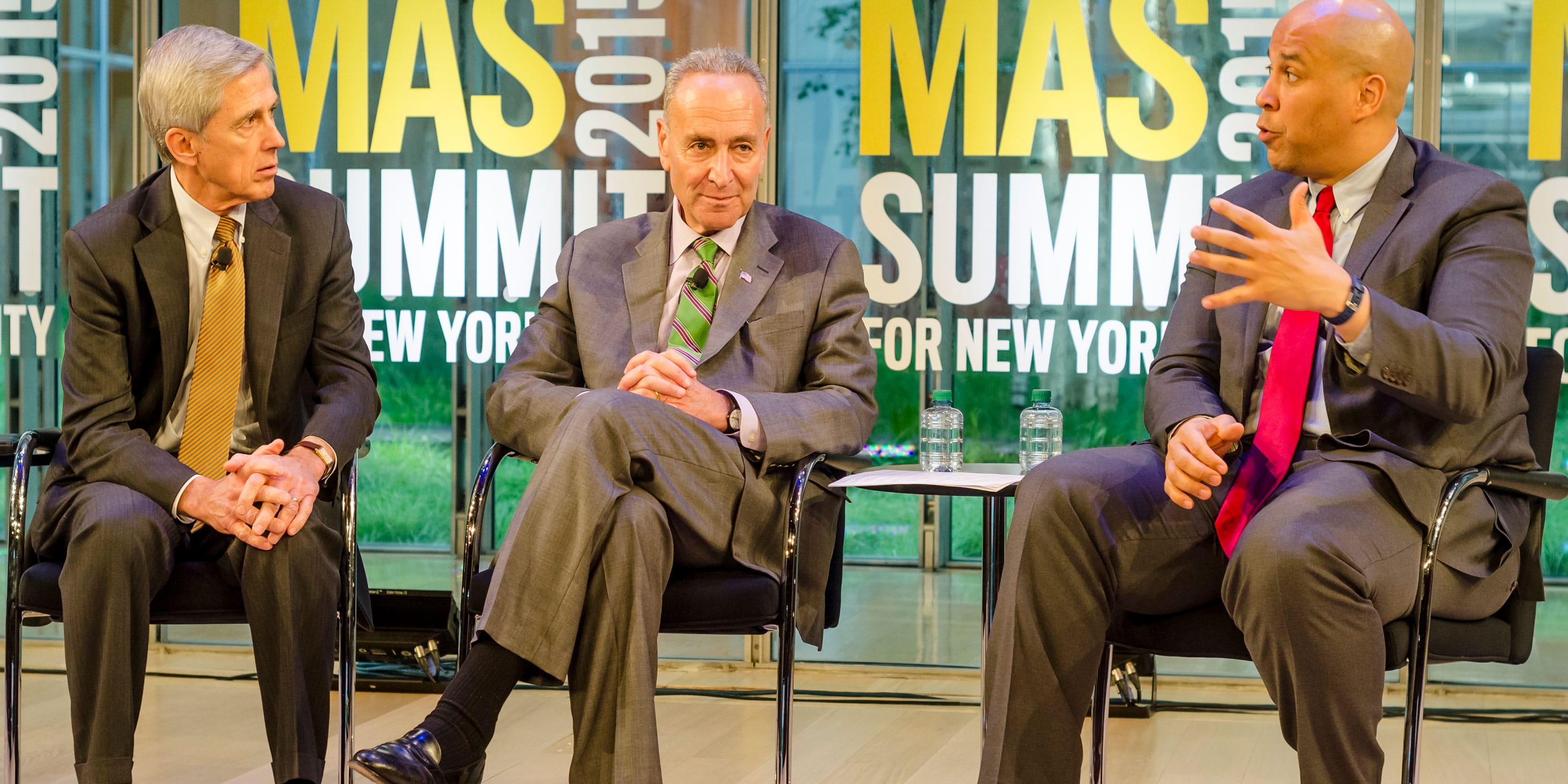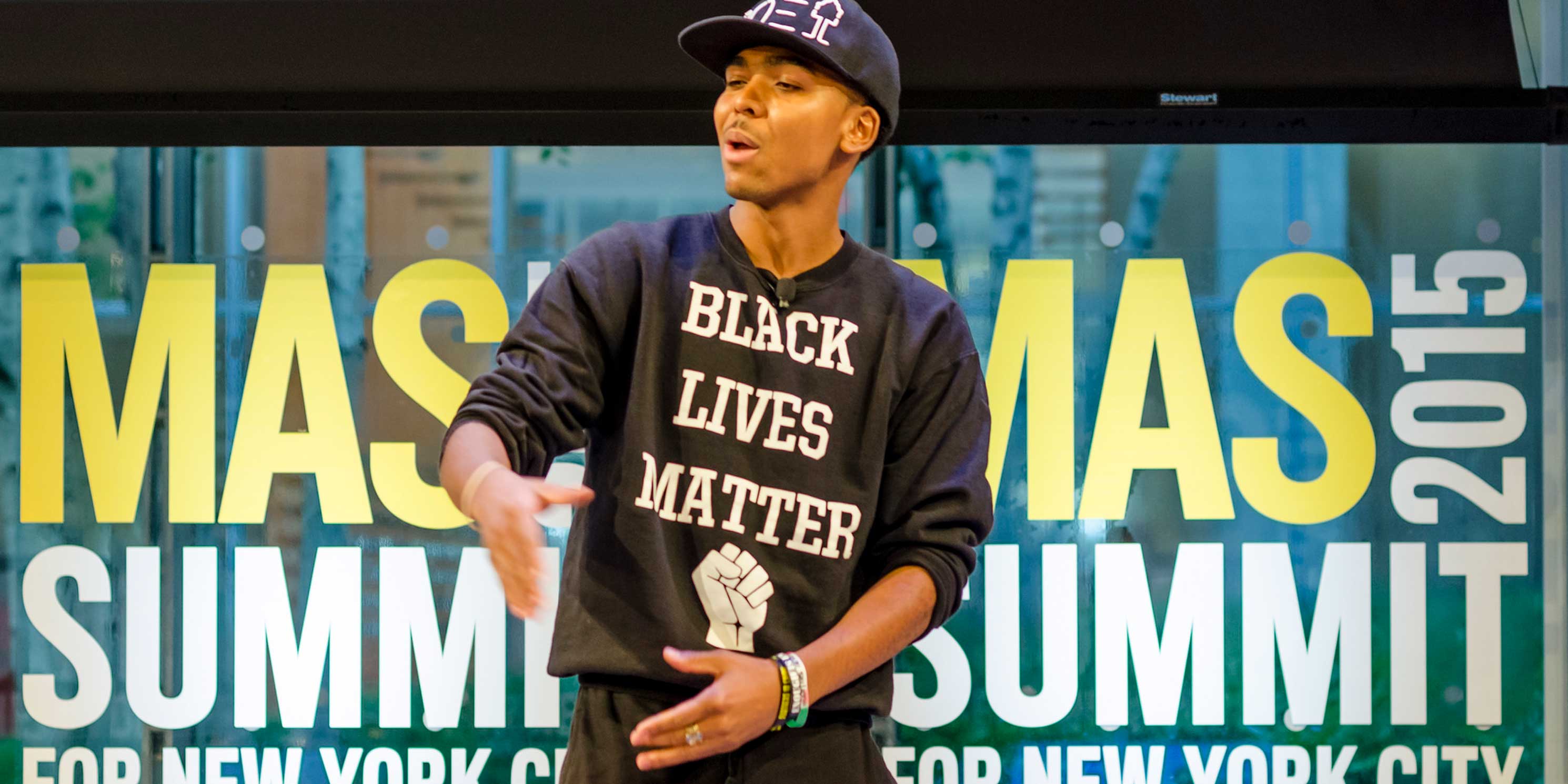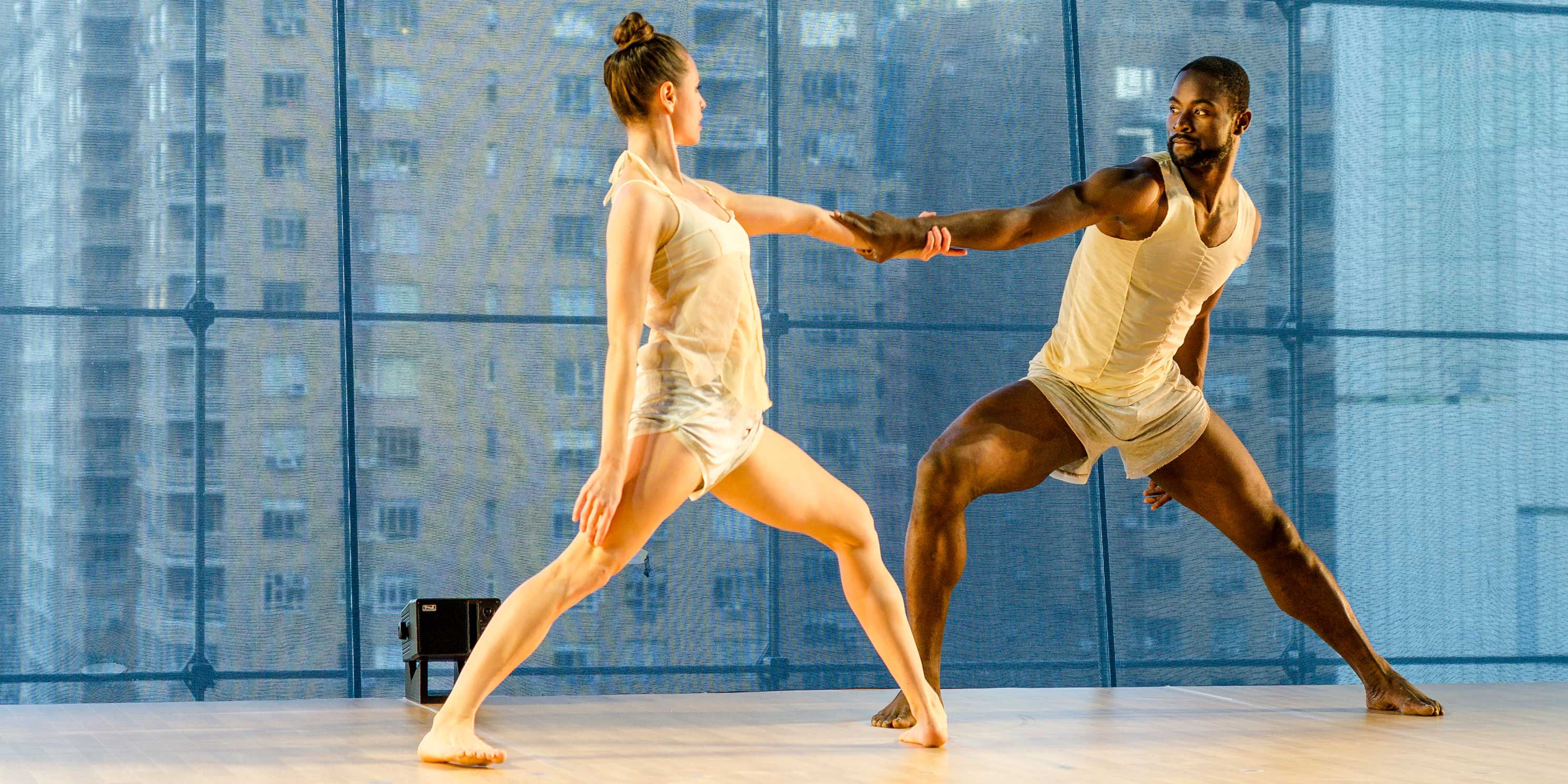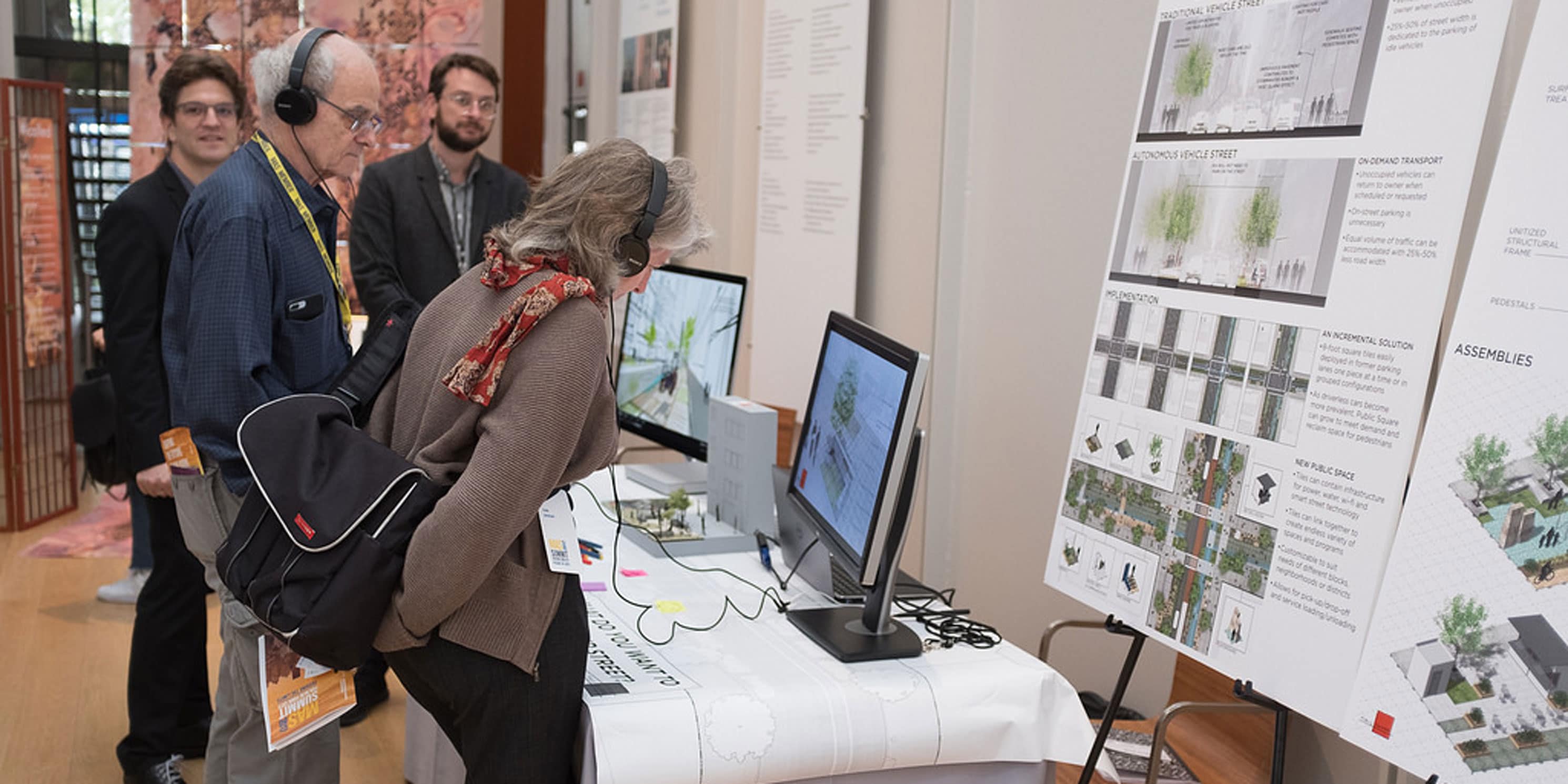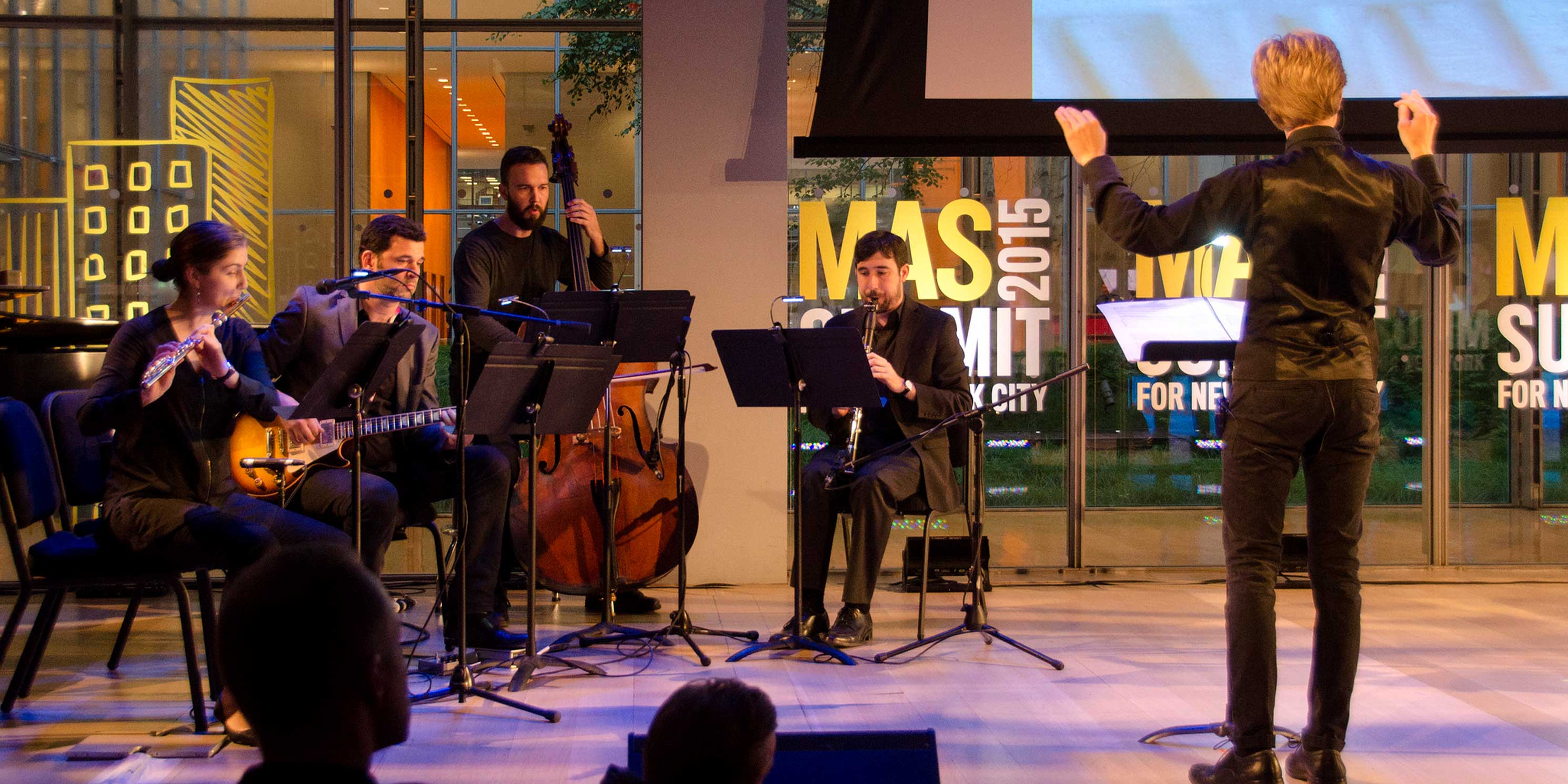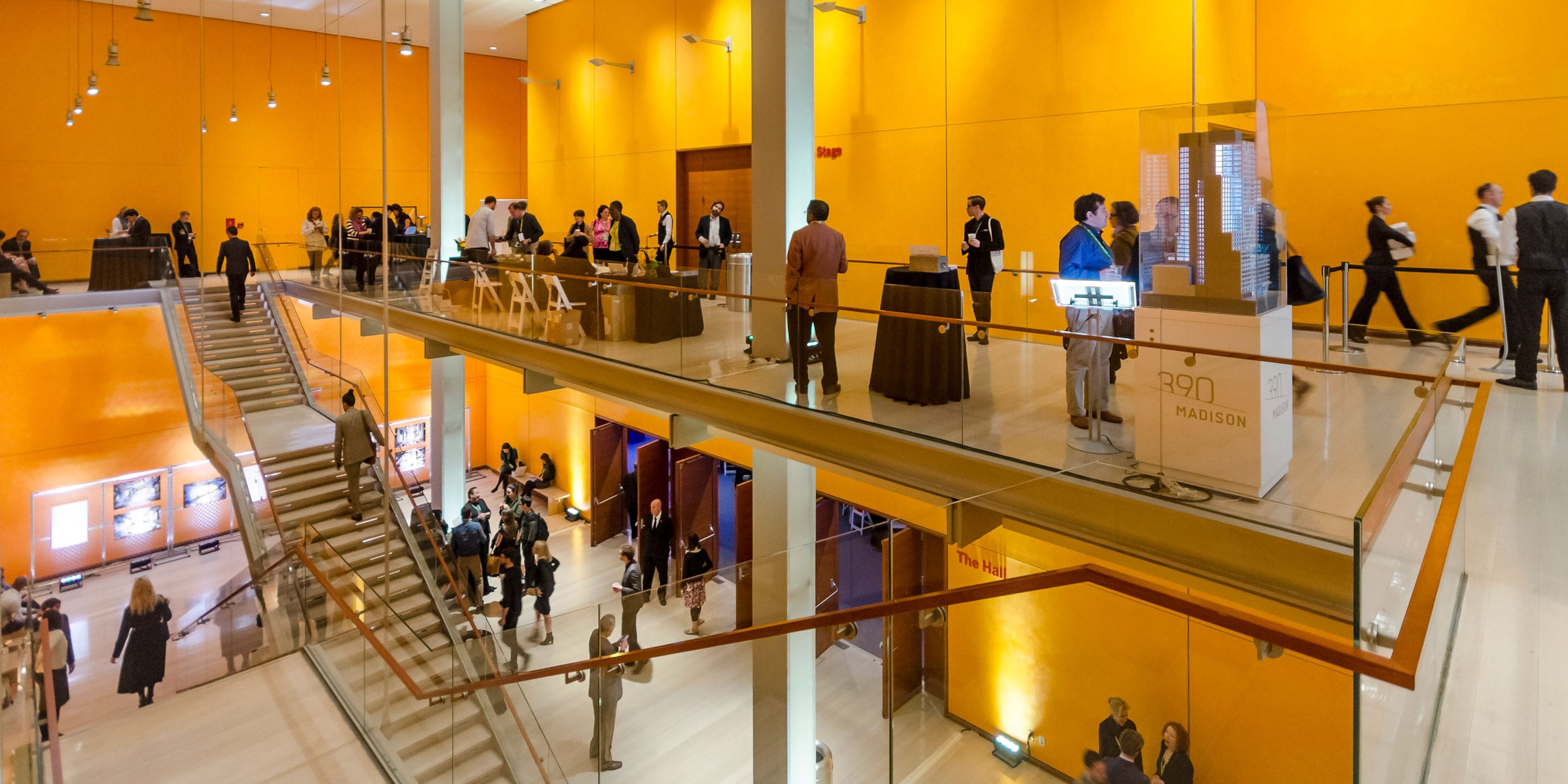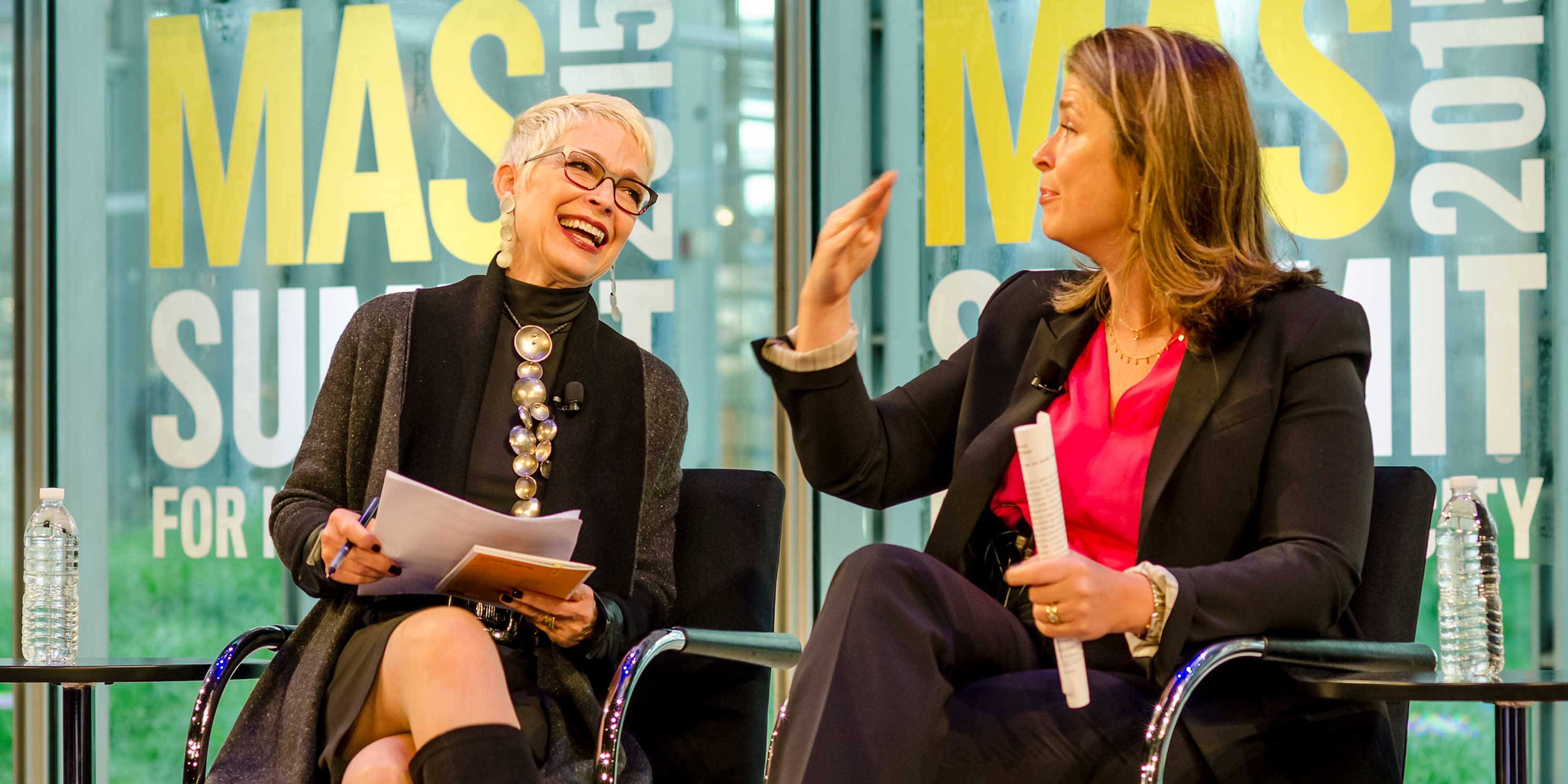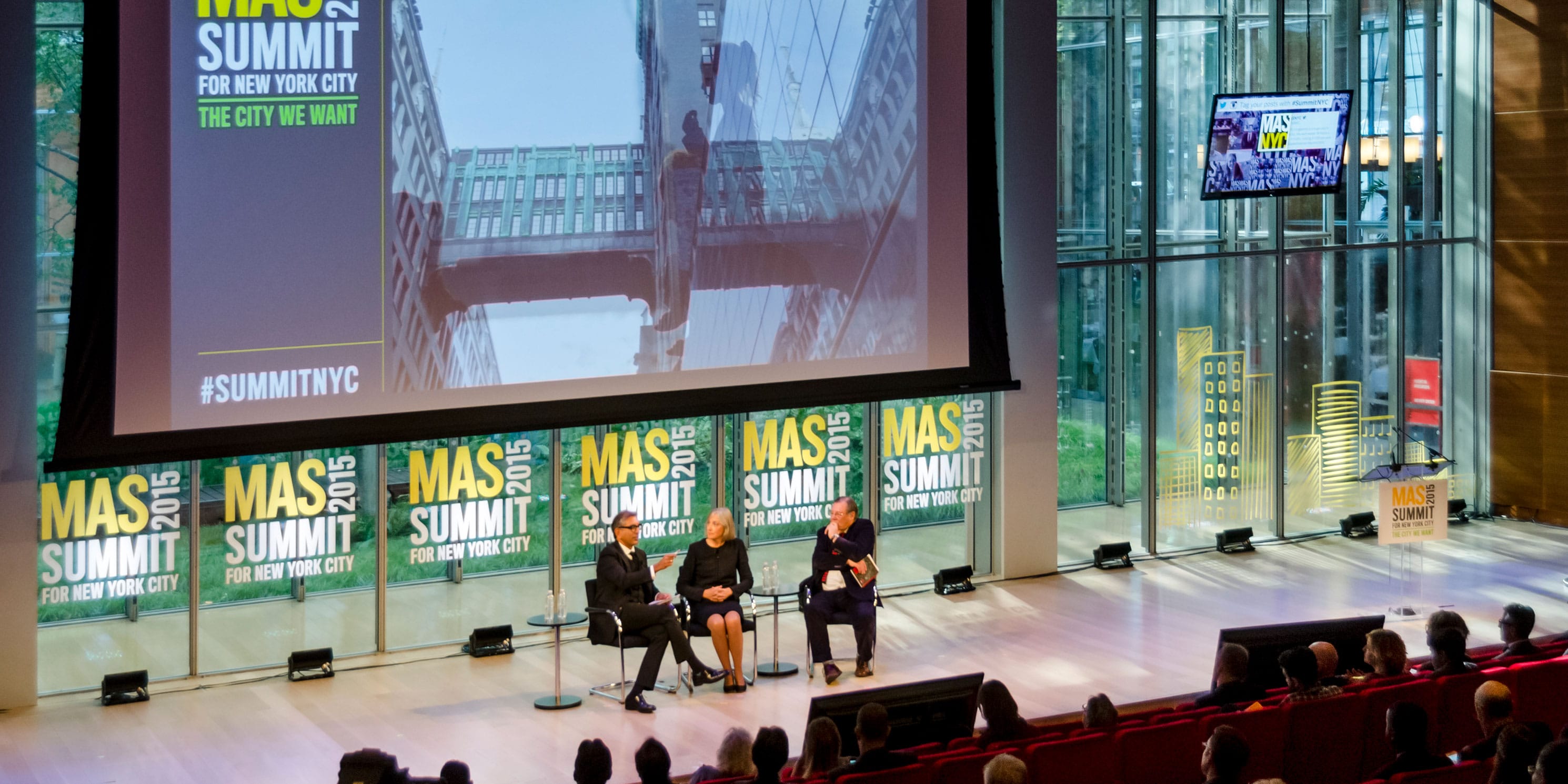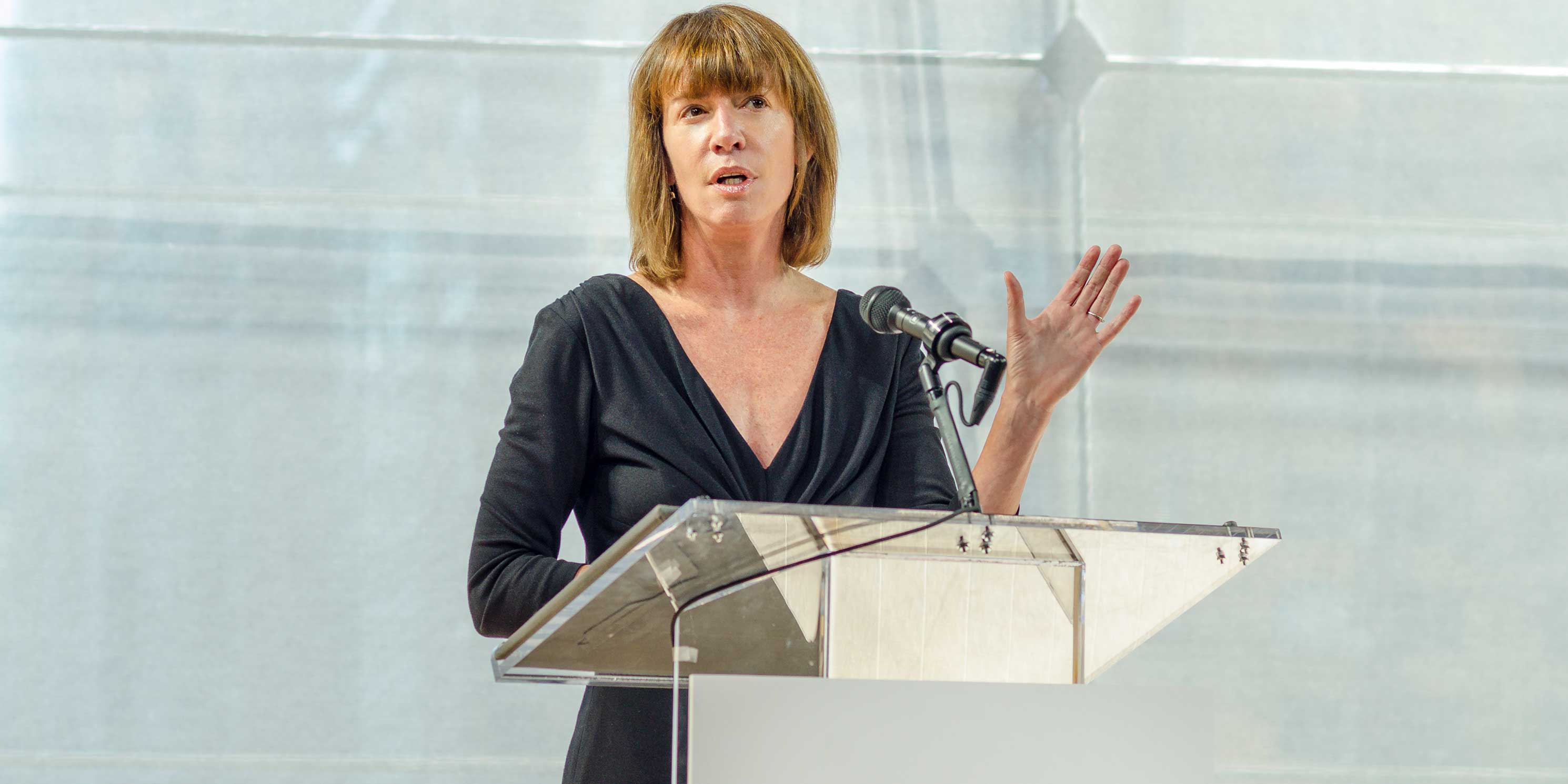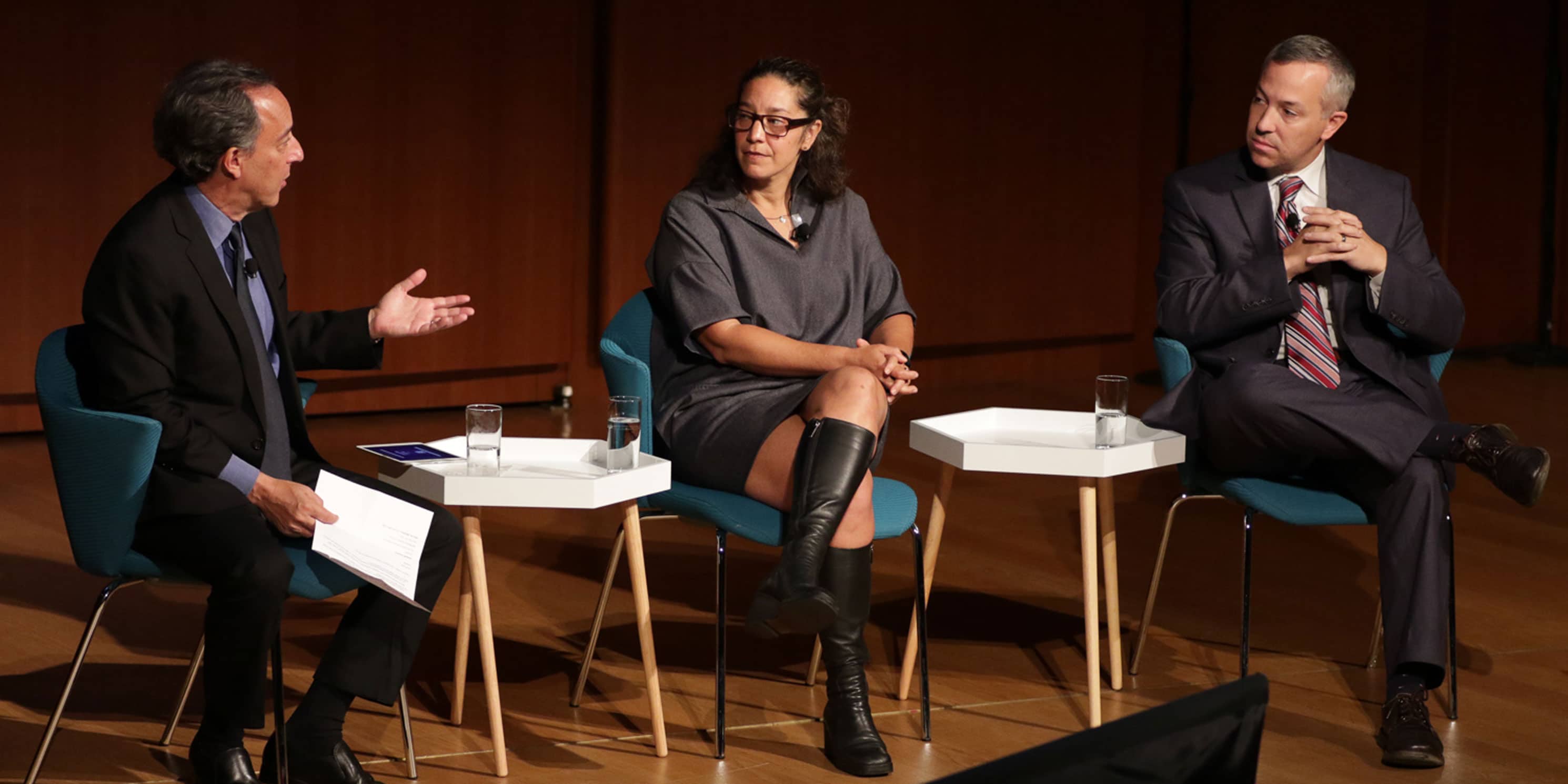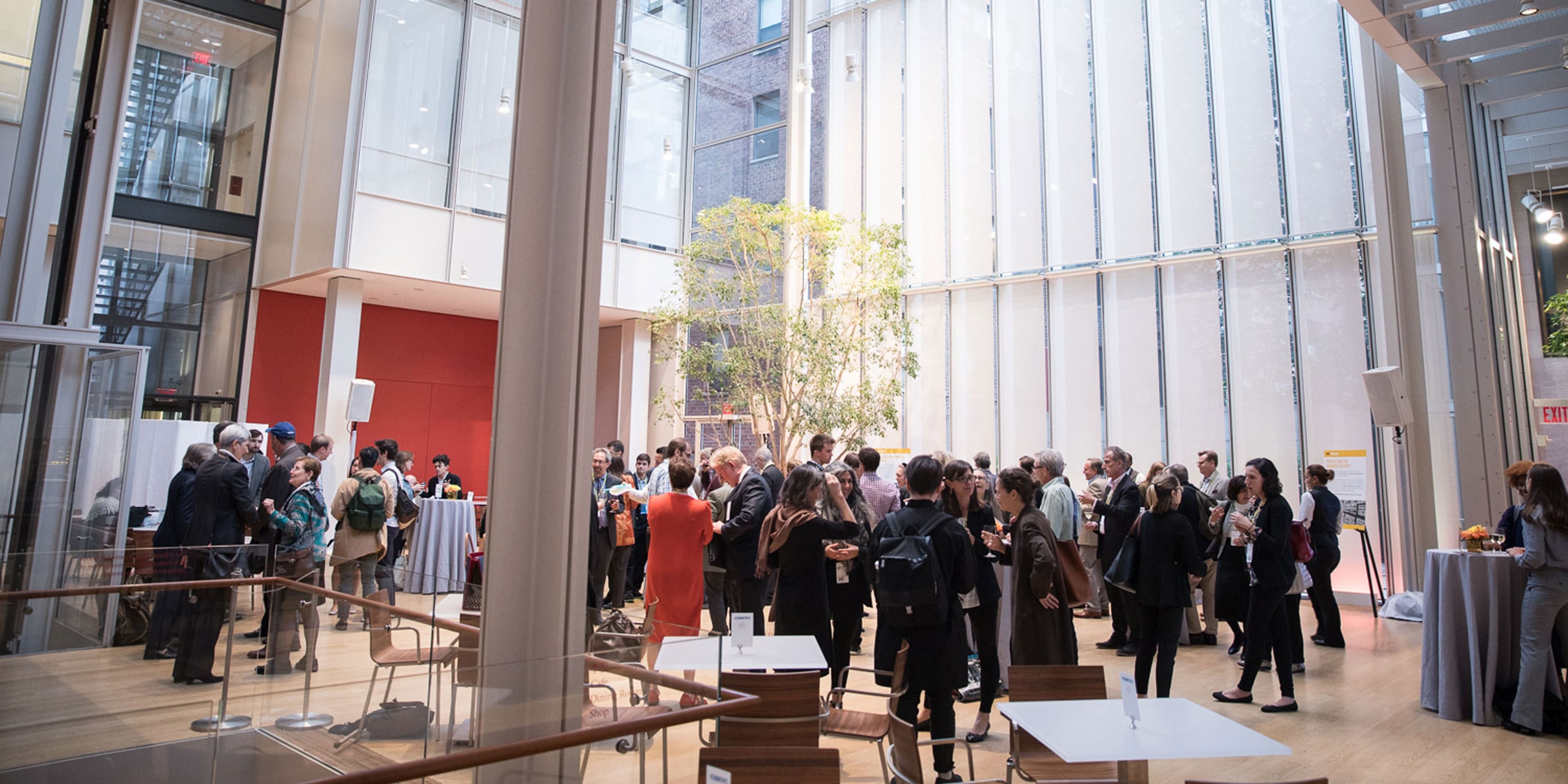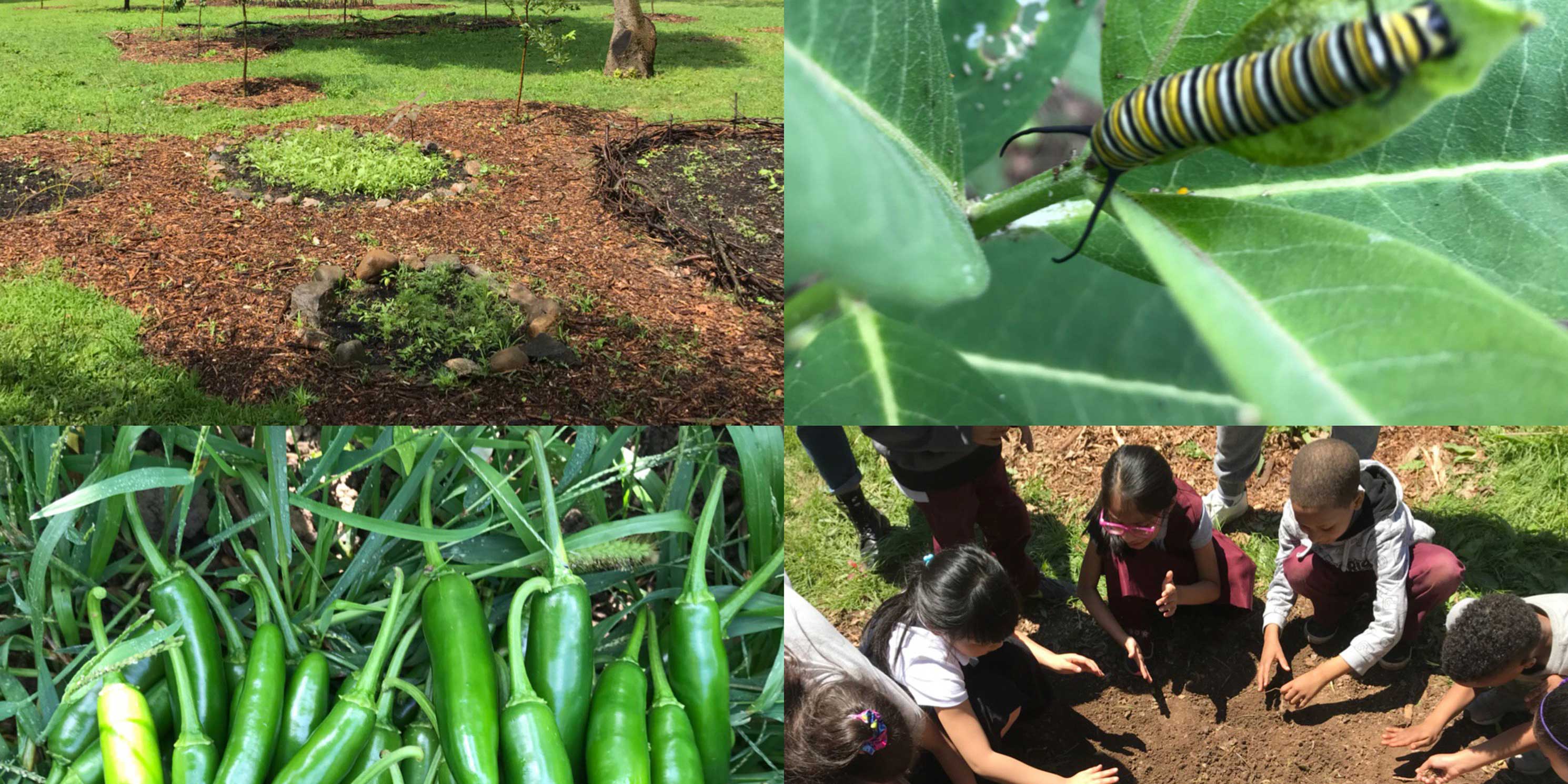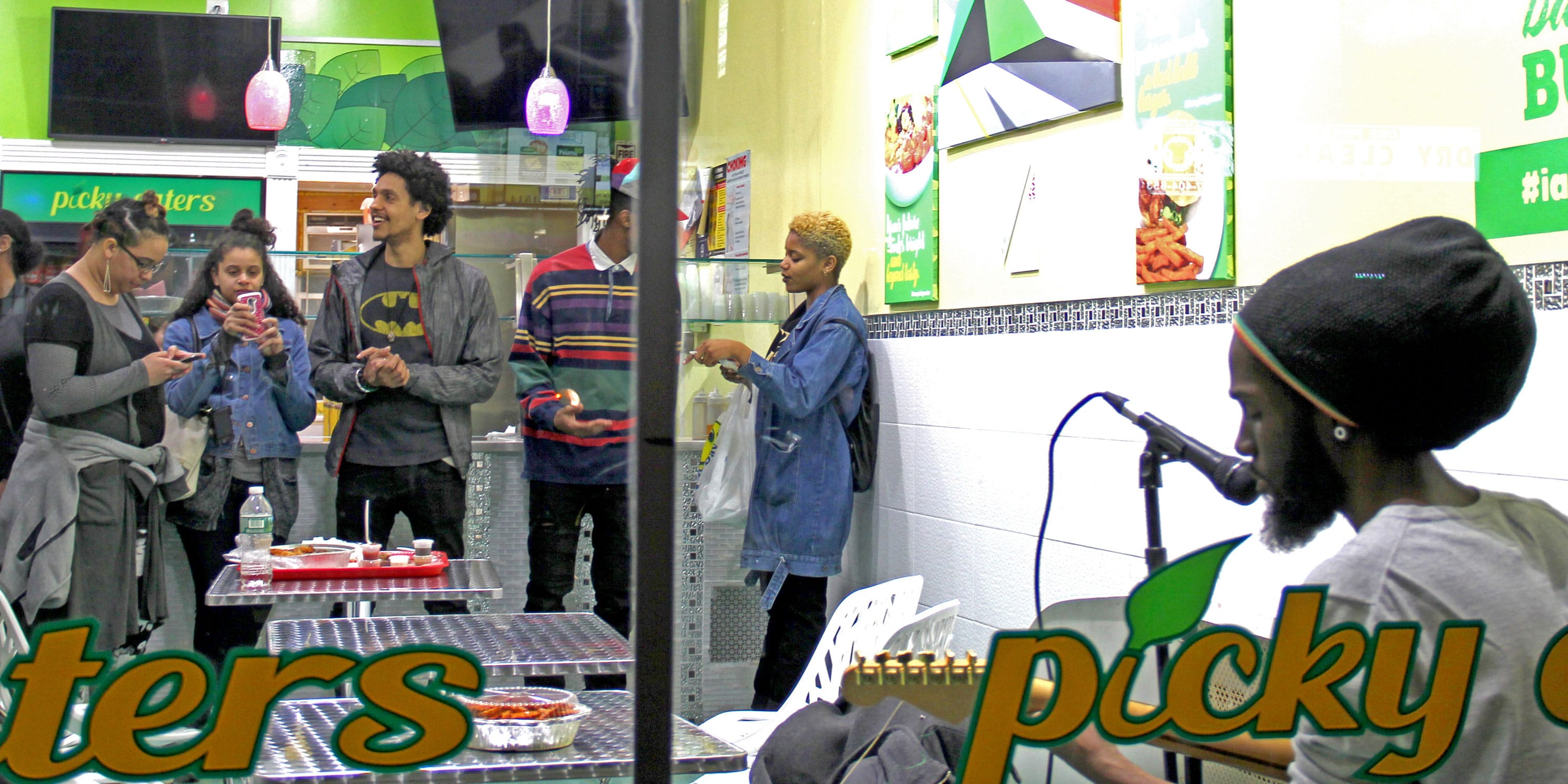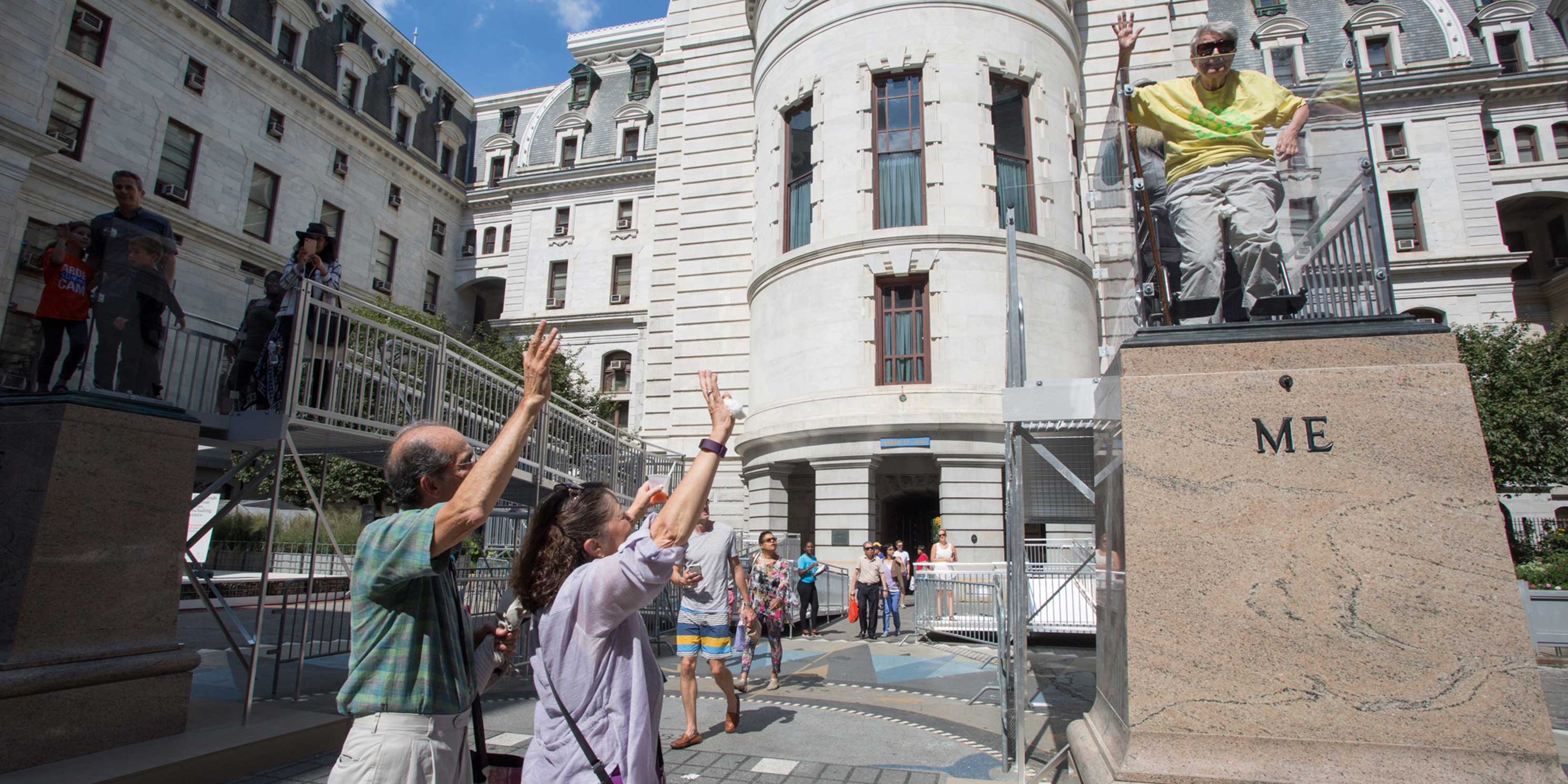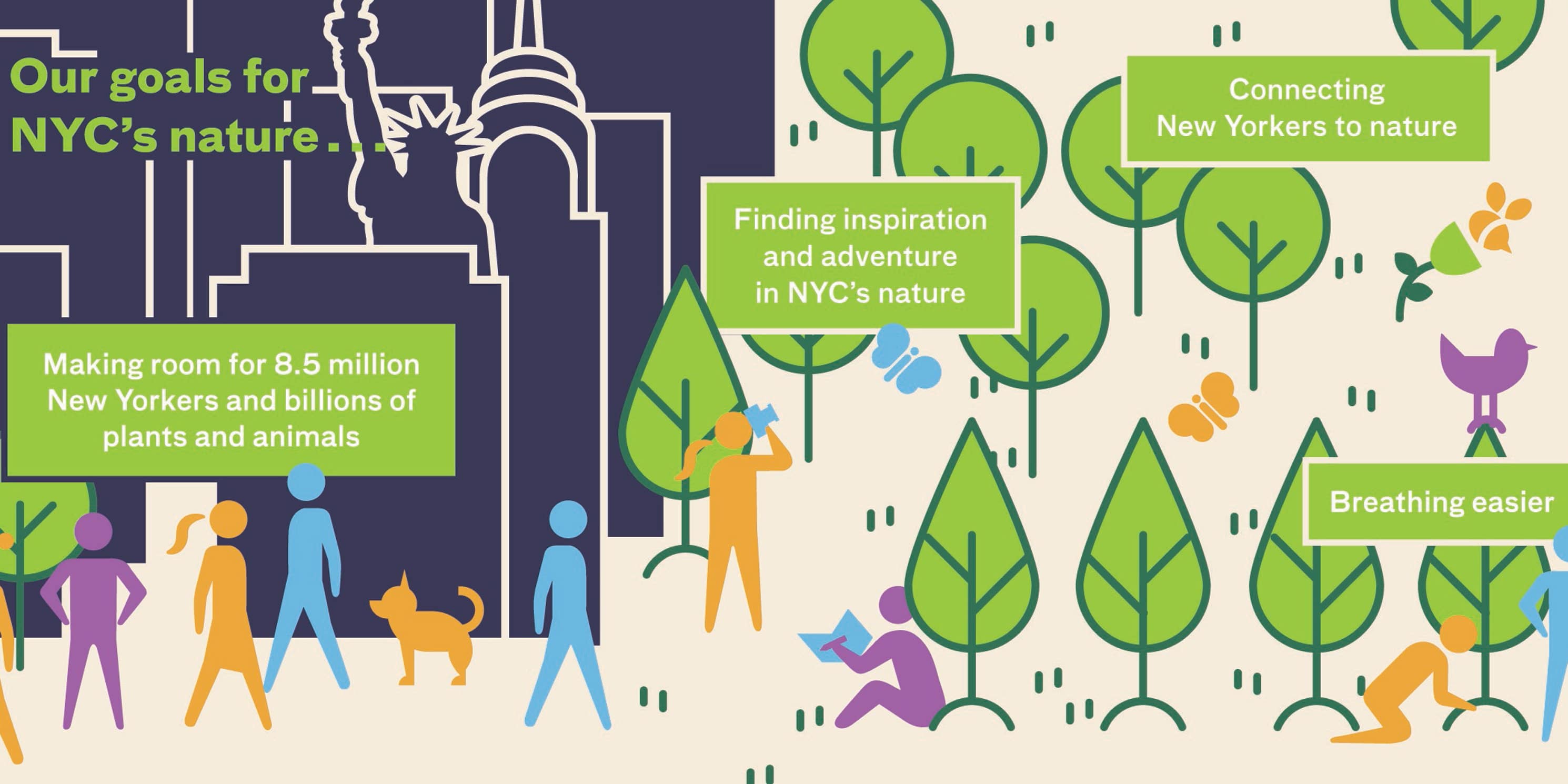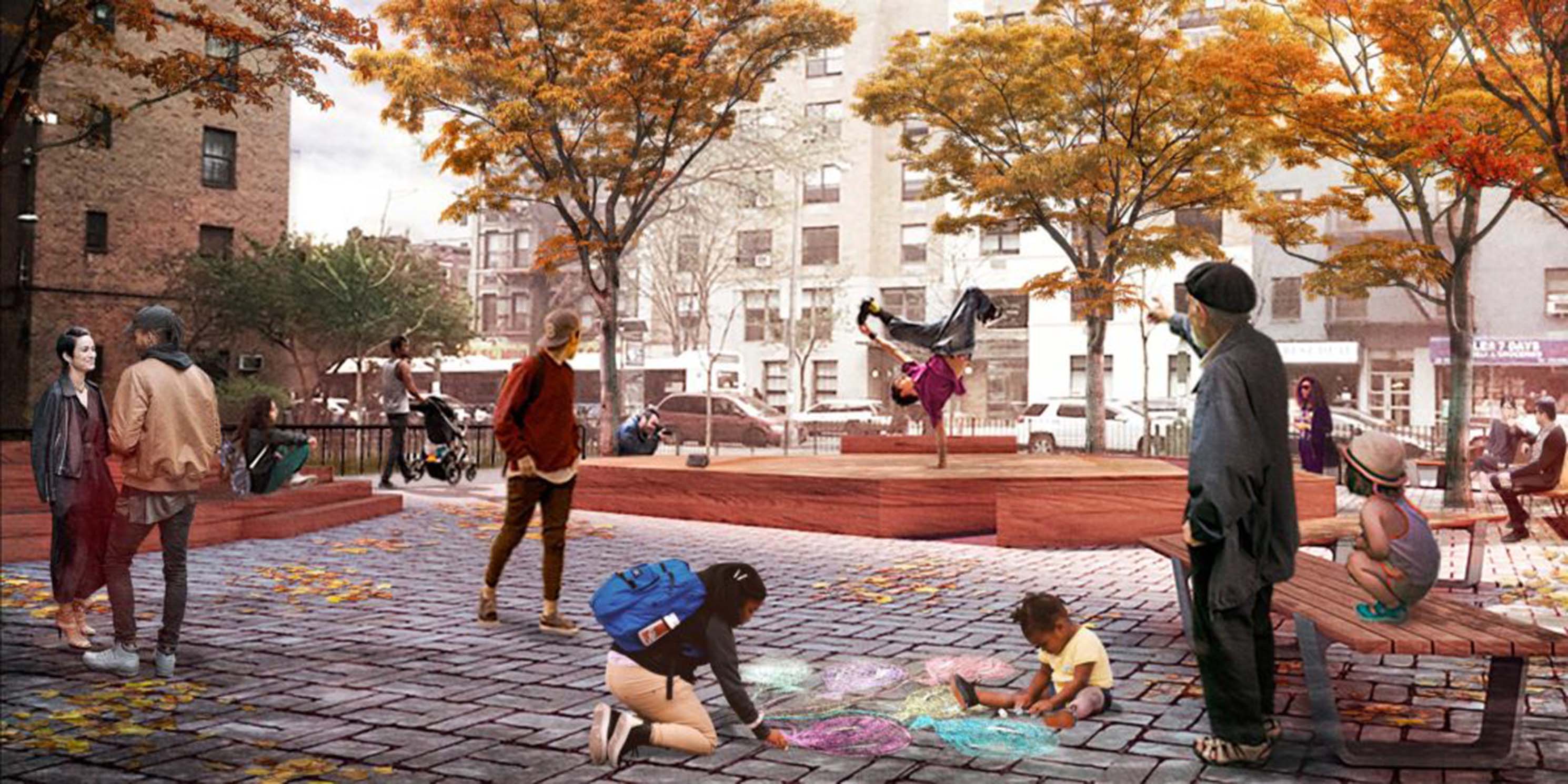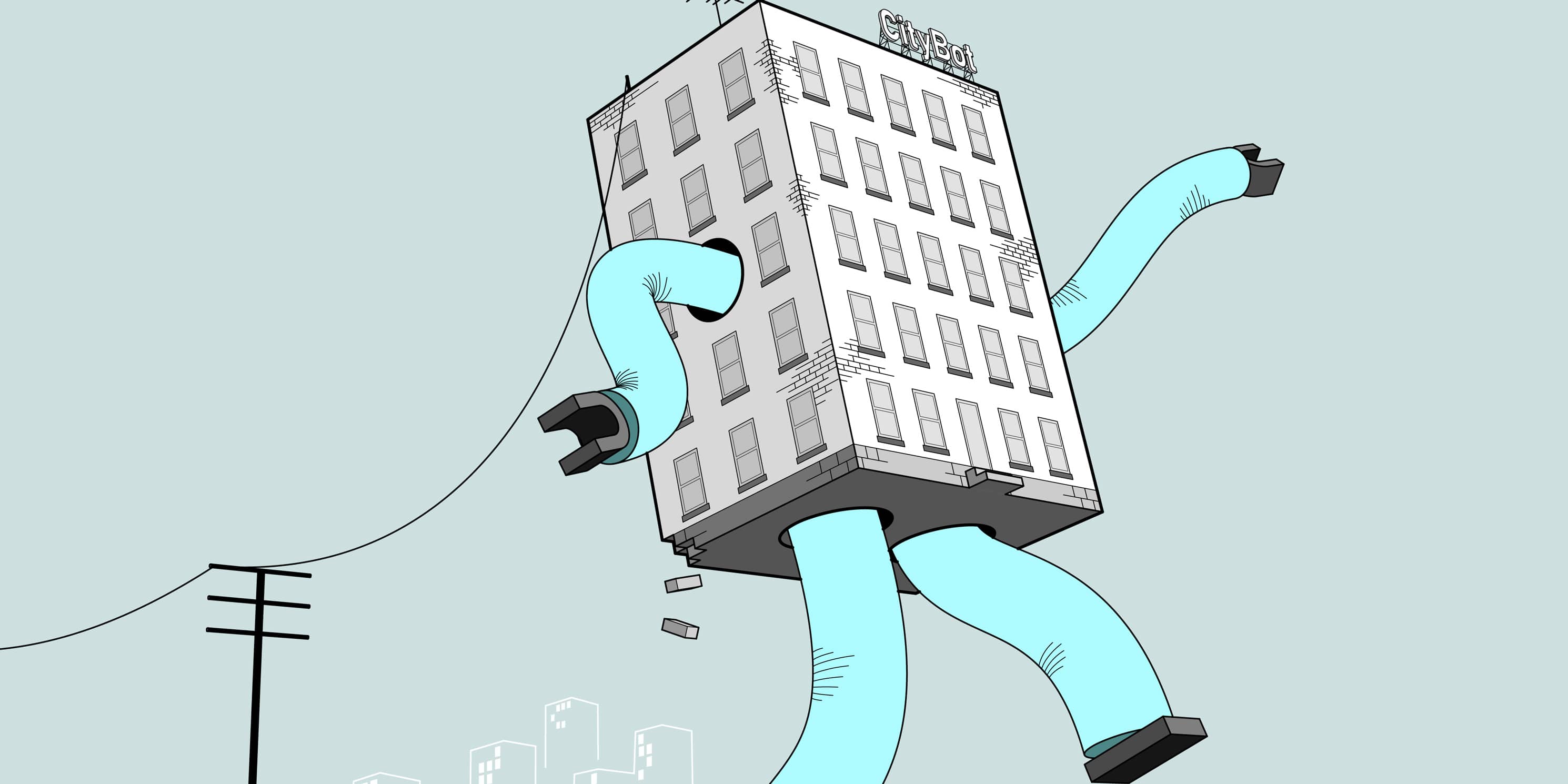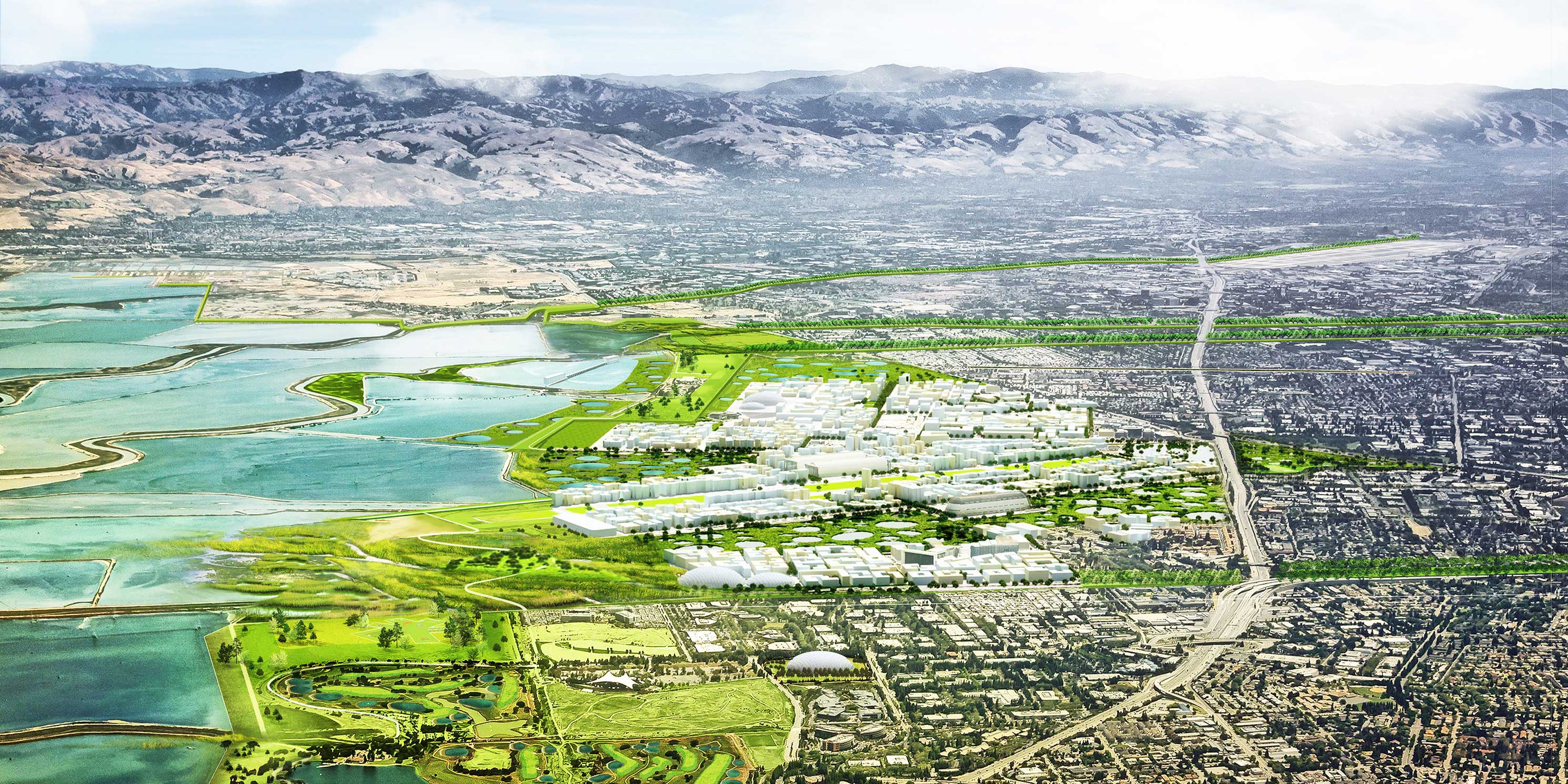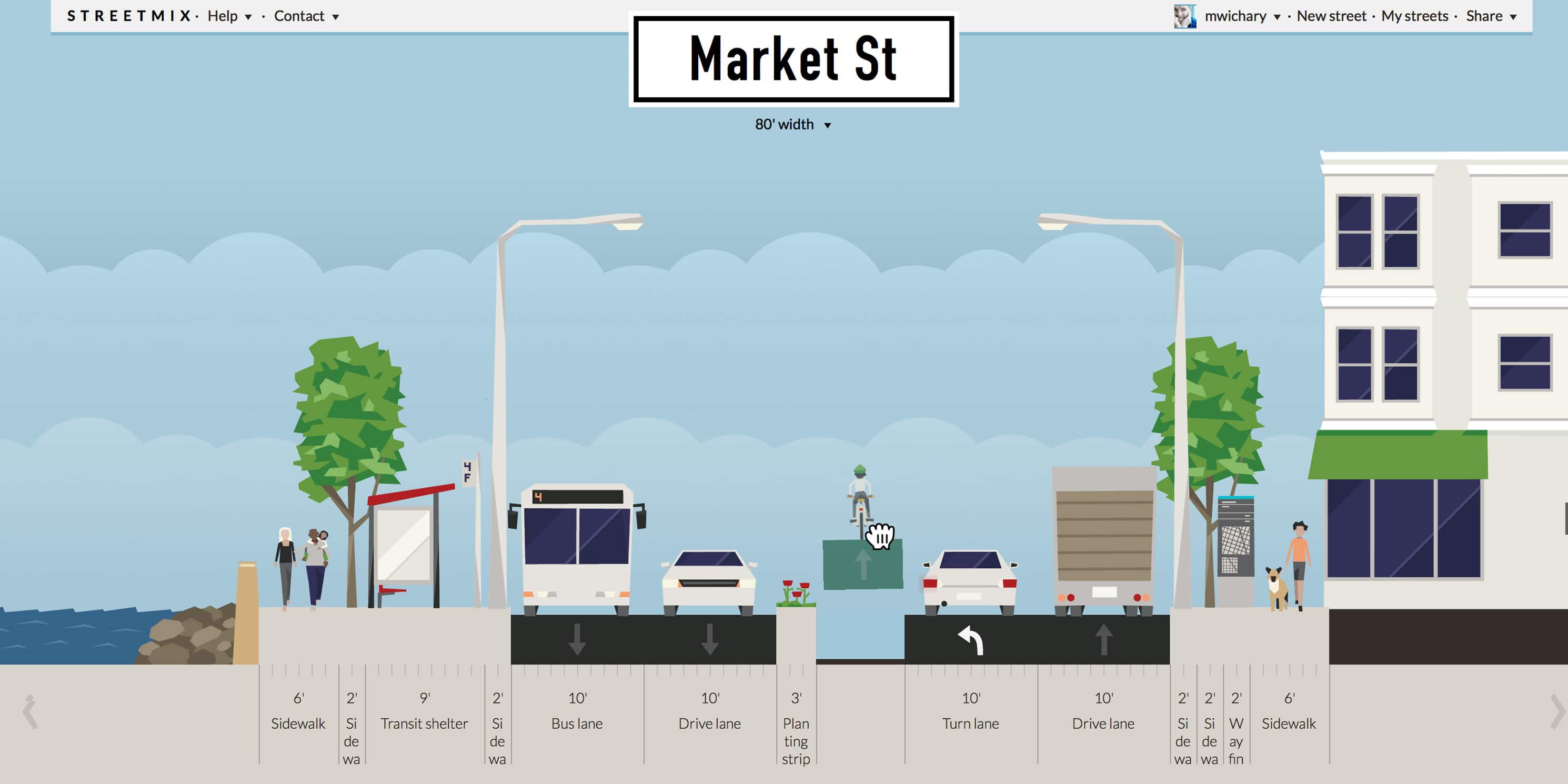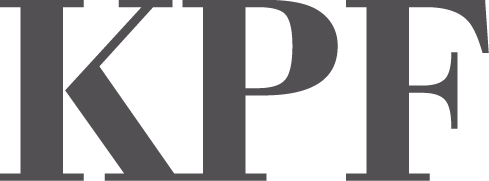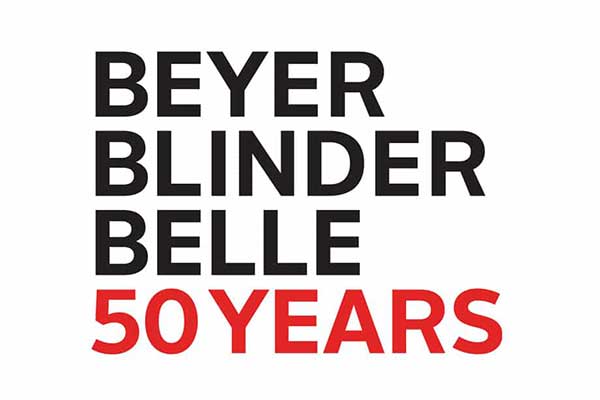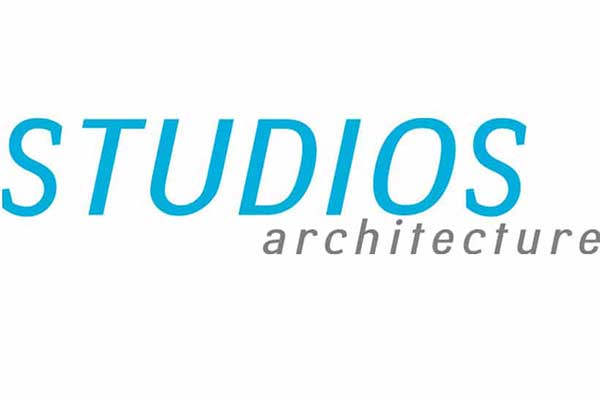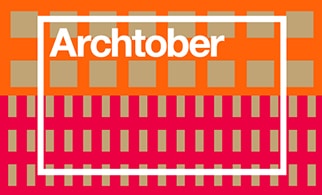2018 Summit for New York City
2018 marks MAS’s 125th anniversary. Since our founding in 1893, MAS has worked to educate and inspire New Yorkers to engage in the betterment of our city. Our advocacy efforts have led to the creation of the New York City Planning Commission, Public Design Commission, Landmarks Preservation Commission, and the Tribute in Light; the preservation of Grand Central Terminal, the lights of Times Square, and the Garment District; the conservation of more than 50 works of public art; and the founding of such civic organizations as the Public Art Fund, the New York Landmarks Conservancy, P.S. 1, the Historic Districts Council, the Park Avenue Armory Conservancy, and the Waterfront Alliance.
The 2018 Summit program was organized around four themes that have been central to our advocacy throughout the last 125 years: Art, Design, Planning, and History. This forward-looking discourse complemented Toward a Livable City, a special exhibition on MAS’s profound impact on the metropolis we live in today, running at the Center for Architecture October 1st through December 31, 2018
Schedule
This past year, monuments and their subjects emerged as flashpoints of heated debate. In response, Paul Farber, Ph.D., and Ken Lum undertook a public art and history initiative in Philadelphia called Monument Lab—a citywide, yearlong provocation to imagine and prototype the next generation of civic monuments at sites of contested cultural memory.
What began as a process of intense scrutiny and historical reckoning with our nation’s past has set the stage for a future-oriented conversation about the role of public art in our cities. How can the selection of new works meaningfully engage citizens, celebrate the overlooked histories that helped shape our city, and advance principles of inclusion?
The arrival of autonomous vehicles is often presented as a panacea for our urban woes, but there are several ways this future could pan out. In her illustrated Op-Ed for The New York Times, SPUR Editorial Director Allison Arieff helps to paint a picture of what these scenarios could look like at street level.
*Multimedia contribution
The age of the automobile fundamentally altered 20th century urban streetscapes. As autonomous vehicle technology advances, we are approaching yet another point of inflection. With that comes an opportunity to wholly rethink our city streets, reclaim space from cars, and apply human-centered design principles. How do we realize a public realm and pedestrian experience worthy of the 21st century?
Join us at the restaurant next-door, Inside Park at St. Bart’s, for lunch and the chance to interact with eight inspiring projects as part of our second annual Innovation Exhibition.
How can open data improve our cities? From parking ticket geography, to restaurant inspection scores, to subway delays and taxi pricing, the founder of I Quant NY, Ben Wellington, sets the stage for discussion by sharing best practices for data science in the policy space and why storytelling is so important.
City governments are accumulating treasure troves of data on everything from transportation patterns to real estate trends. But contrary to its name, open data often remains inscrutable to the average citizen. How can we promote transparency by translating this data into measured policy and sound decision-making?
What would it be like to live here? By bringing together data scientists, urban planners and cartographers, Localize.city seeks to answers this question for every address in New York, and soon many more cities. Amy Zimmer will show how the platform is empowering city dwellers, along with interesting trends her team has uncovered in the course of their research.
In a fast-changing Kuala Lumpur, artist Pui Wan aims to preserve her city’s prized places—and the memories of the communities that inhabit them—through a singular approach. Atlas Obscura captured Pui making immaculate miniatures of buildings before their demolition.
*Multimedia contribution
City Lore’s initiative, From Mambo to Hip Hop, illustrates how interpreting a story contributes to public knowledge, while supporting historic preservation and cultural conservation. It also demonstrates how local cultural assets can be recovered and used to instill pride of place.
Traditional historic preservation advocacy has focused on the “bricks and mortar” of high-style architecture. But in the face of accelerated change, there is a pressing movement to protect the layers of urban heritage found in less permanent formats: the graffiti, the mom and pop shop, the gay night club, the basketball court, the community garden. How do we best preserve the city’s cultural identity?
What do Carnegie Hall, Woodlawn Cemetery, Stonewall, and the Alice Austen House have in common? They are all historic sites associated with New York City’s rich LGBT history and culture. Ken Lustbader will share examples of hundreds of sites representing the city’s LGBT place-based past, as it gears up for its celebration of Stonewall 50 in 2019.
Founded in 1979 and comprising over 275 talented singers of various ages, New York City Gay Men’s Chorus (NYCGMC) was a pioneering voice for LGBTQ communities in NYC and remains a fearless champion for LGBTQ rights and social justice at home and abroad.
Join us next-door at Inside Park at St. Bart’s for a networking reception, last look at Innovation Exhibition projects, and book signing by acclaimed author Hilton Als. Please be sure to bring all your belongings with you, as the church will close after the program concludes. There is coat check available at Inside Park.
Featured Participants
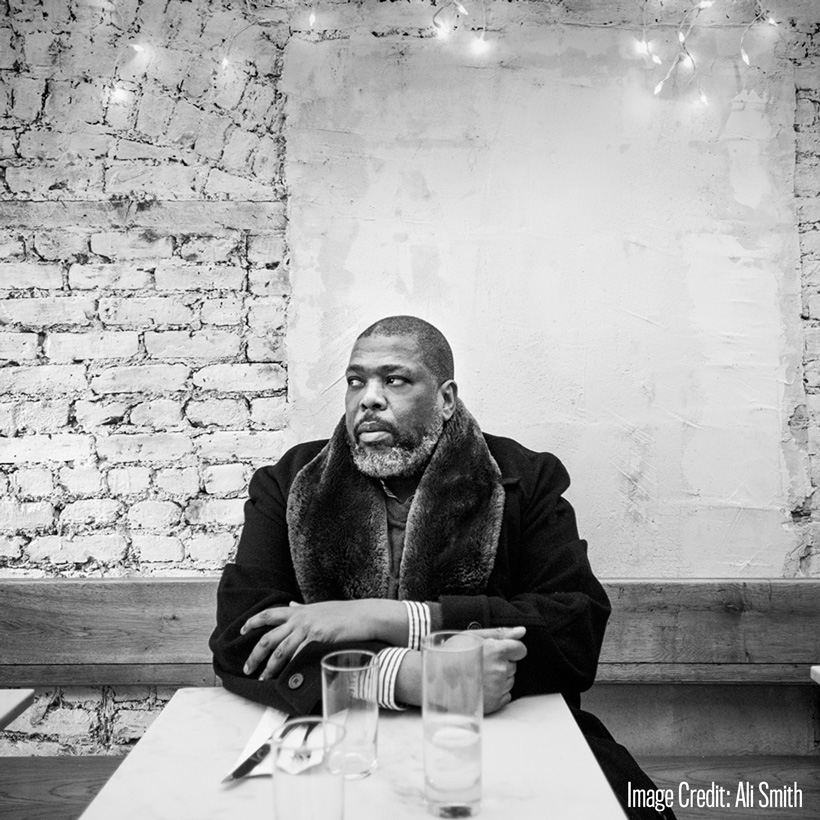
Hilton Als began contributing to The New Yorker in 1989, writing pieces for ‘The Talk of the Town’. He became a staff writer in 1994, theatre critic in 2002, and lead theater critic in 2012. Week after week, he brings to the magazine a rigorous, sharp, and lyrical perspective on acting, playwriting, and directing. His reviews are not simply reviews; they are provocative contributions to the discourse on theatre, race, class, sexuality, and identity in America. Prior to The New Yorker, Als was a staff writer for the Village Voice and an editor-at-large at Vibe. His books include The Women, White Girls, and Andy Warhol: The Series, and he has received numerous awards including a Guggenheim for creative writing (2000), the George Jean Nathan Award for Dramatic Criticism (2002-03), and the Lambda Literary’s Trustee Award for Excellence in Literature (2016). In 2017, Als won the Pulitzer Prize for Criticism. Als is an associate professor of writing at Columbia University’s School of the Arts and has taught at Yale University, Wesleyan, and Smith College. He lives in New York City.
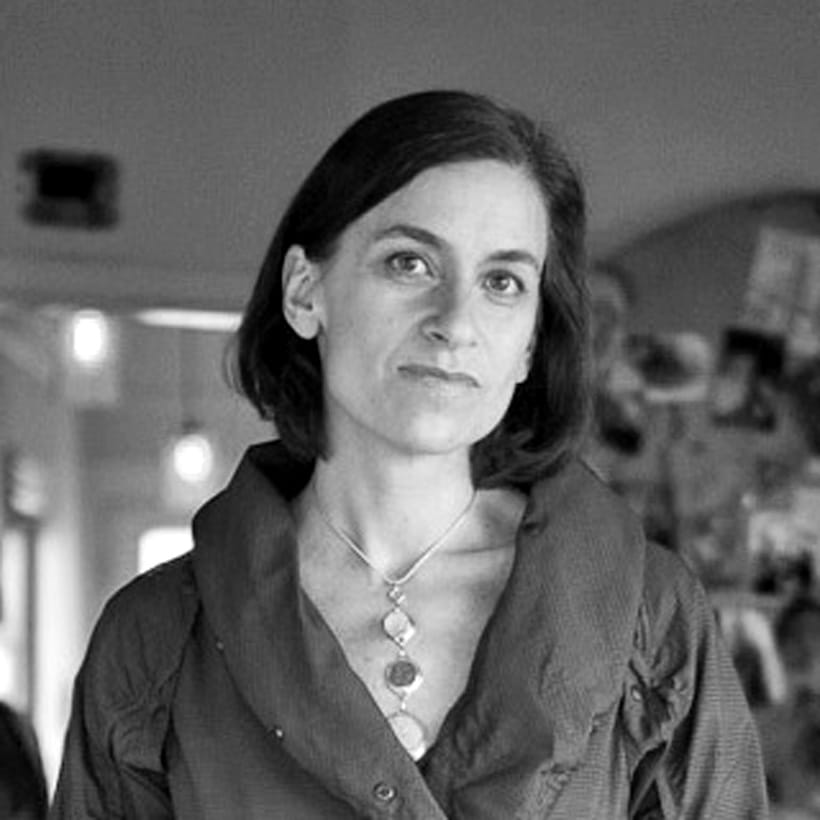
Allison Arieff is Editorial Director of the San Francisco Bay Area-based urban planning and policy think tank, SPUR. She has been a contributing opinion writer for The New York Times since 2006, and in 2018, was the recipient of the AIGA Steven Heller Award for Cultural Commentary. Allison writes, lectures and consults on urbanism, design, and architecture for numerous publications and clients including The MIT Technology Review, Wired, A+U, Gensler, SOM, Arup, and Google. From 2006-2008, she was Senior Content Lead for the global design and innovation firm, IDEO, where her focus was on the built environment. Arieff was the founding senior editor and later, Editor-in-Chief, of Dwell magazine, which won the National Magazine Award for General Excellence in 2005 under her tenure. She is an instructor in U.C. Berkeley’s new master’s program in sustainable real estate development and design.
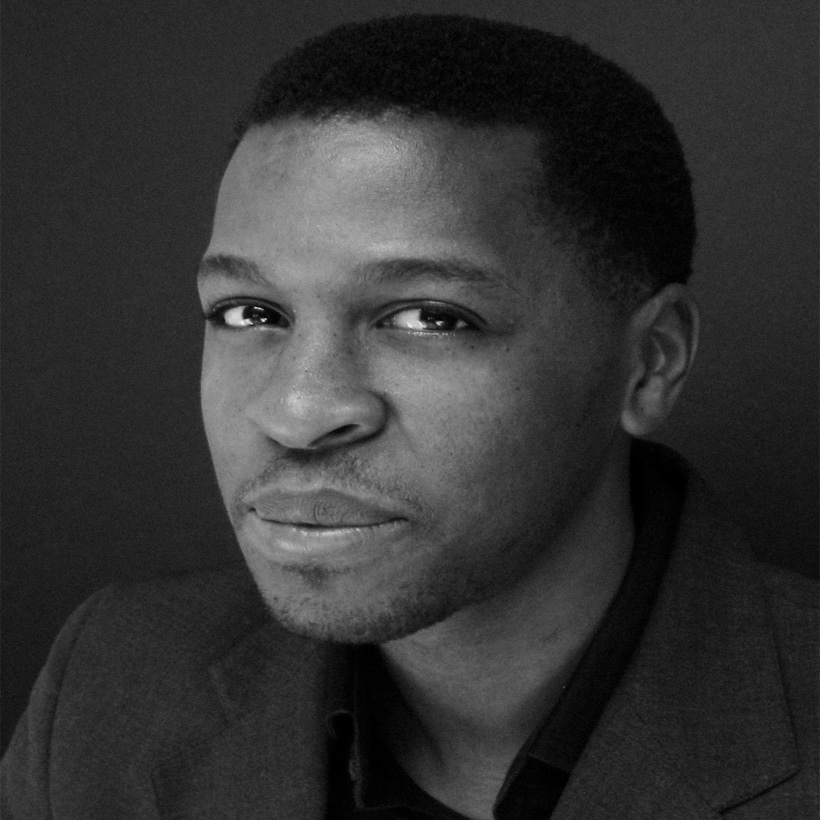
Kenseth Armstead is a multimedia installation artist. His works have been exhibited at the Whitney Museum of American Art; the Brooklyn Museum; The Solomon R. Guggenheim Museum; the Studio Museum in Harlem; the Berlin VideoFest; and the MIT List Visual Arts Center. His videos, drawings and sculptures are included in the collections of the Centre Pompidou, African American Museum in Dallas, Texas and numerous public and private collections. The New York Times, L Magazine, Art in America, Village Voice, The Boston Globe and The Washington Post have favorably reviewed his videos, sculptures and multimedia installations.
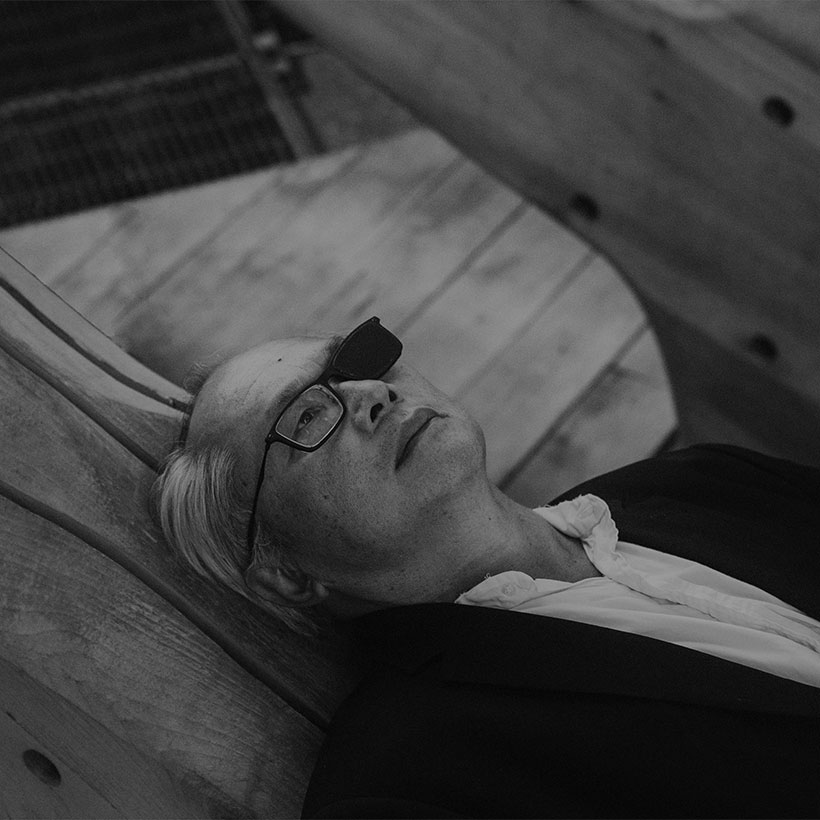
Mel Chin, a recipient of national and international awards, has a broad range of approaches, including works that require multi-disciplinary, collaboration and works that conjoin cross-cultural aesthetics with complex ideas. His Revival Field, (1989–ongoing), pioneered the use of plants to remove toxic metals from the soil. His nationwide Fundred Project engages and presents the value of the public’s will to promote the end to childhood lead poisoning. Chin resists any branding that may fence in his capacity to execute iconic sculptures in any medium, engage in any territory toxic or social, or to encourage the expansion and generational transfer of ideas in any alternative field. His retrospective ReMatch, which explored his mutative strategies, at the New Orleans Museum of Art 2014, was followed by a comprehensive survey, “ALL OVER the PLACE” organized by No Longer Empty and the Queens Museum, citywide manifestations in NYC, opened in spring, 2018.
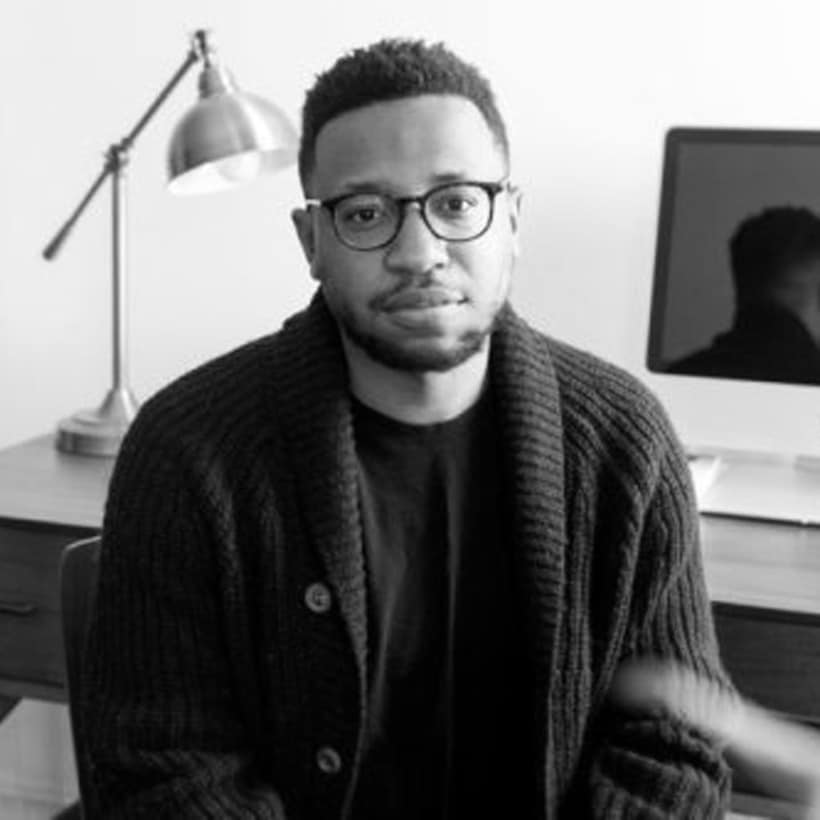
Vinson Cunningham is a staff writer at The New Yorker. His essays, reviews, and profiles have appeared in The New York Times Magazine, The New York Times Book Review, FADER, Vulture, The Awl, and McSweeney’s Internet Tendency. A former White House staffer, he now teaches an MFA Writing course at Sarah Lawrence College and lives in New York City.
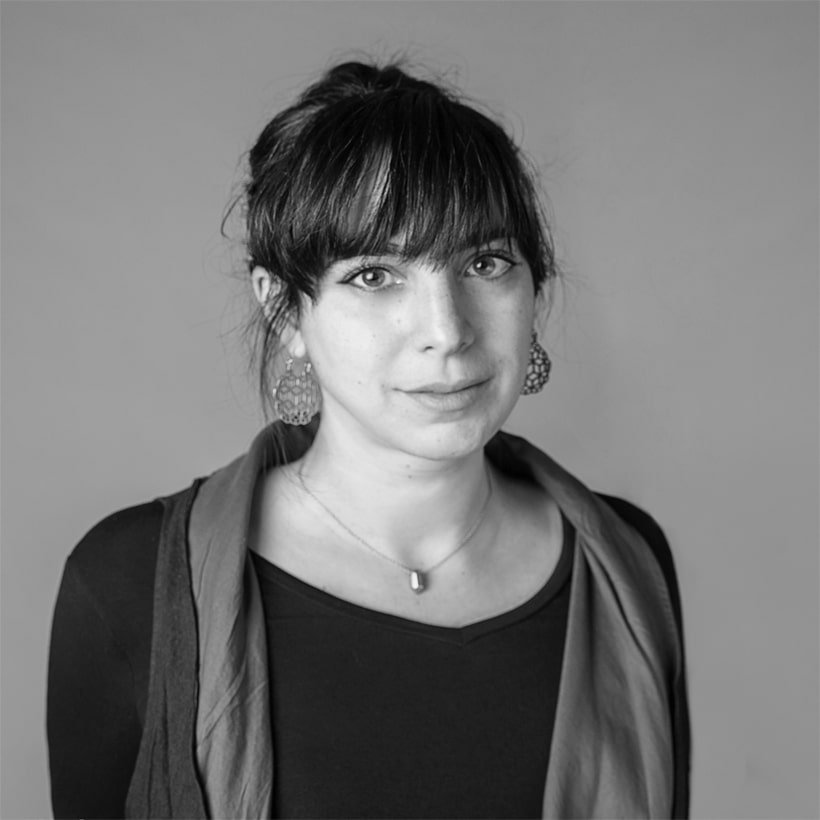
Rose DeSiano uses alternative-photo processes, sculpture and manipulated photography as tools to examine the history within the landscape, our collective consciousness and the long, tangled history of photography as both a truth teller and mythmaker. She has exhibited in solo NYC gallery shows, museum exhibitions and biennials including; Bronx Art Museum, NY, Allentown Museum of Art, PA, Heritage Museum of Malaga, Spain, and international photo fairs; Photoville NYC, #ForFreedoms, FOTOFOCUS Ohio and Changsha Photo Festival, China. Her public sculptures have been commissioned by Port of San Diego, CA, N.Y.C Dept. of Parks, and I-Park, CT with her works appearing in N.Y.C’s Central Park, Randall’s Island among others. Winner of the 2018 Uniqlo Parks Expression Grant, she unveiled photo-sculpture “Absent Monuments” in NYC. DeSiano received her M.F.A from Art Center, Los Angeles and her B.F.A from New York University-Tisch. A Professor at Kutztown University, PA while living in Brooklyn.
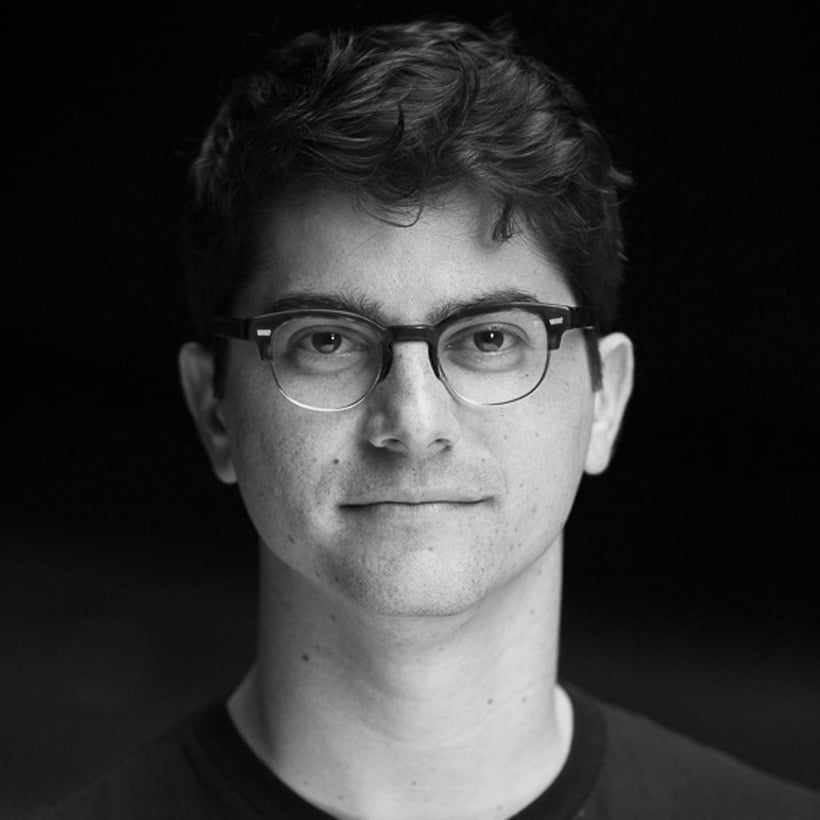
Paul M. Farber, Ph.D. is a historian and curator. He is the Artistic Director of Monument Lab and teaches courses in Fine Arts and Urban Studies at the University of Pennsylvania. Farber is the author of the forthcoming monograph A Wall of Our Own: An American History of the Berlin Wall (University of North Carolina Press, 2019). He is also the editor of a new critical edition of photojournalist Leonard Freed’s Made in Germany (Steidl Verlag, 2013), co-editor of Monument Lab: Creative Speculations for Philadelphia (Temple University Press, 2019), and co-editor of a special issue of the journal, Criticism, on HBO’s The Wire (2011). His cultural criticism has previously appeared in The Guardian, Museums & Social Issues, Art & the Public Sphere, Vibe, and on NPR. Farber has lectured and lead workshops at the Library of Congress, New York Public Library, the Philadelphia Museum of Art, and the Barnes Foundation.
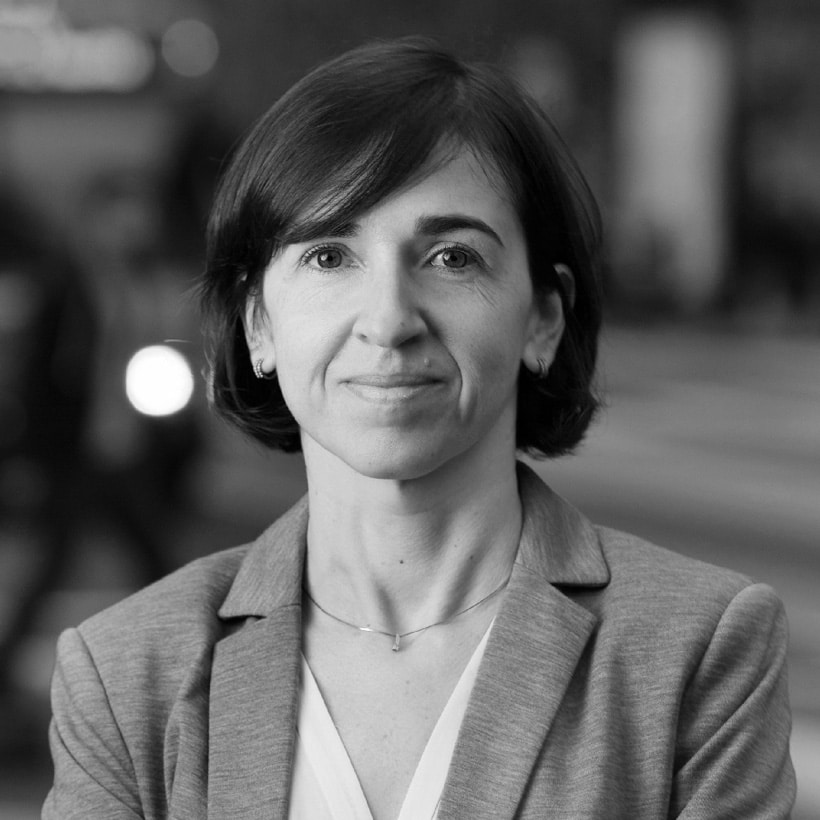
Meritxell Font is a Principal at Nelson\Nygaard, head of the firm’s New York Office and co-lead of the firm’s east coast Design and Engineering sector. After 18 years of planning, modelling, and evaluating several urban transportation systems worldwide, Meritxell has built a wide-ranging and diverse portfolio of global projects. It includes the implementation of an efficient orthogonal bus network and the connection of the existing tramway network in Barcelona, Spain, as well as feasibility studies of BRT corridors, bus network restructuring plans, and transportation master plans in Asia, Africa, and Latin America. Also, more recently, Meritxell has participated in several projects in the greater New York City metropolitan area. Most notably, NYCDOT’s Curbside Management Study and Parking Blueprint. Meritxell is a certified Professional Transportation Planner (PTP) and holds a M.S./B.S. in Civil Engineering from the Catalonia Polytechnic University (Barcelona, Spain).
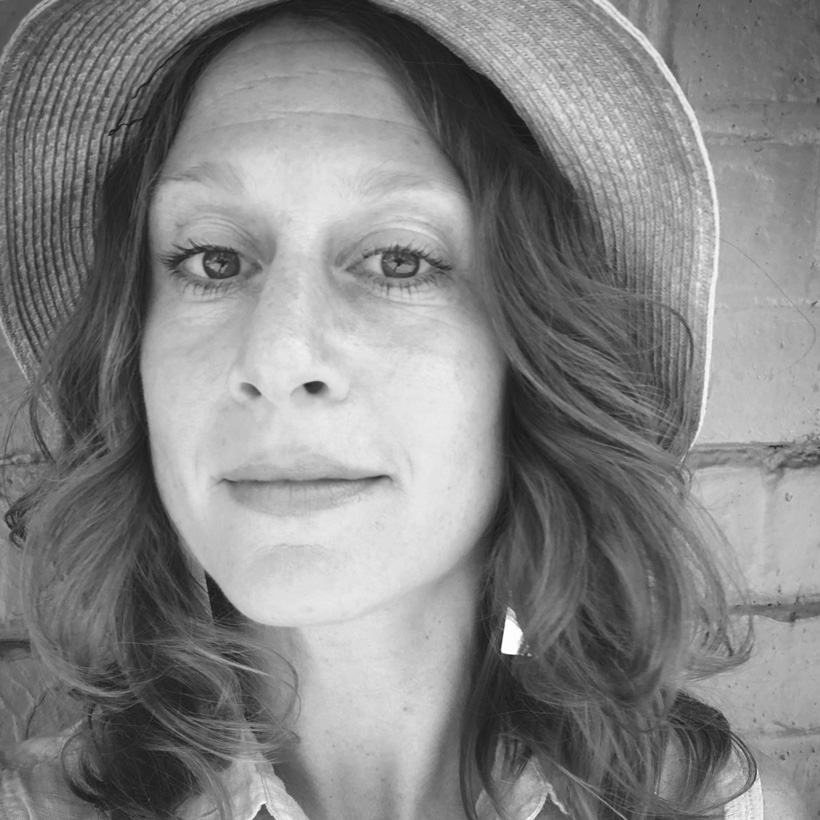
Molly Garfinkel directs City Lore’s Place Matters program. She collaborates with communities across the country on cultural resource management, public history, and traditional arts advocacy projects. Her research explores Western and non-Western building traditions, theories of cultural landscapes, and histories of urbanism and city planning. Garfinkel often works with student place activists, and has published articles in the University of Oregon’s CultureWork broadside, Voices, the Journal of the New York Folklore Society, and the University of Pennsylvania’s LA+ design journal. She holds a BA in Art History from Wesleyan University and an MA in Architectural History from the University of Virginia.
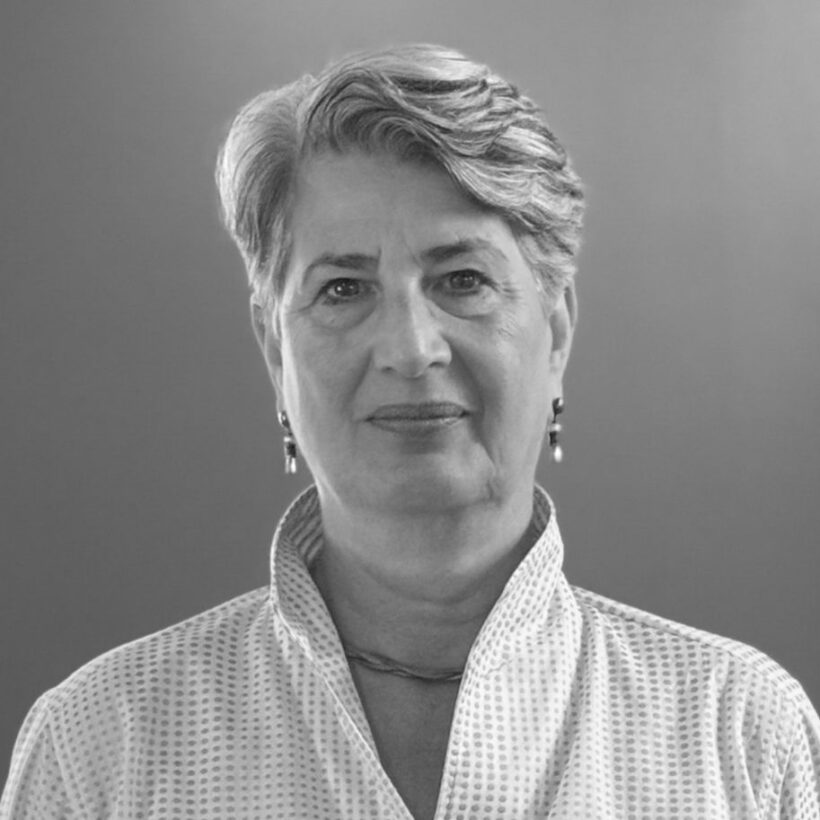
Elizabeth Goldstein joined MAS as its President in February 2017. Elizabeth has an extensive background in parks and historic preservation advocacy and management. Throughout her career, Elizabeth has worked to insure transparent public engagement in civic decisions of consequence to public space and the heritage of key places across the United States. Prior to returning to her NYC roots, Elizabeth was most recently the President of the California State Parks Foundation from 2004 to 2016. Prior to that she was the General Manager of the San Francisco Recreation and Parks Department (1999 to 2004), and the Western Director of the National Trust for Historic Preservation (1994-1999). Her work in parks includes the New York City Regional Director of the New York State Office of Parks, Recreation and Historic Preservation (1989-1994), the Director of Planning for the New York City Park Department (1986-1989) and the Chief of Staff of the Manhattan Borough Office of NYC Parks. Elizabeth graduated from Beloit College. Elizabeth is a past Co-Chair of the City Parks Alliance and board member of numerous non-profit boards.
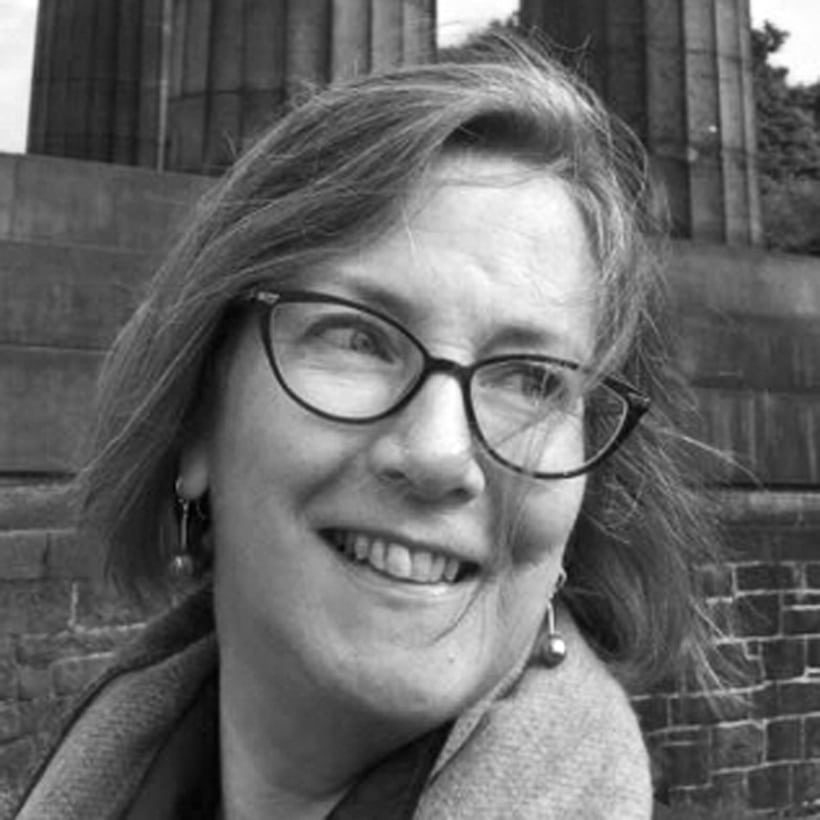
Donna Graves is an independent historian/urban planner based in Berkeley, CA. She develops interdisciplinary public history projects that emphasize social equity and sense of place. Her work weaving together local histories, preservation, art, and community participation began with her tenure as Executive Director of The Power of Place, which received national acclaim for its ground-breaking work in interpreting the history of downtown Los Angeles through urban design, historic preservation and public art. Graves has been instrumental in establishing and developing California’s Rosie the Riveter/WWII Home Front National Historical Park and is an Advisor to the National Park Service’s Asian American/Pacific Islander Theme Study. She recently co-authored an award-winning study of LGBTQ historic sites in San Francisco. A 2010 Loeb Fellow at Harvard’s Graduate School of Design, Graves lectures and writes about new ways of thinking about cultural heritage conservation.
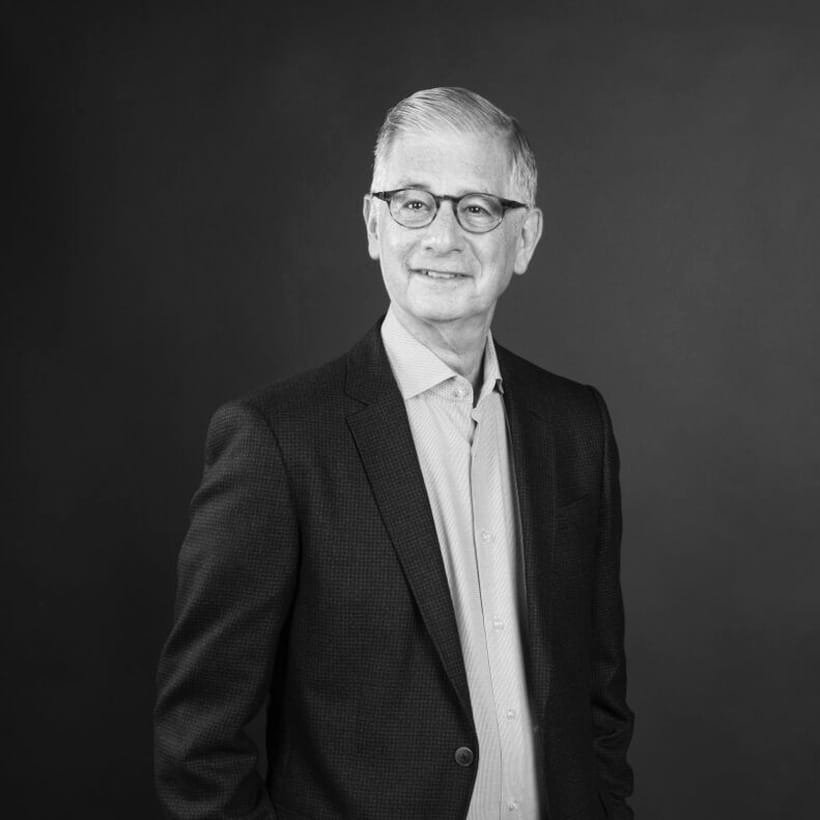
Stephen Goldsmith is the Daniel Paul Professor of the Practice of Government and the Director of the Innovations in Government Program at Harvard’s Kennedy School of Government. He directs Data-Smart City Solutions, the Project on Municipal Innovation, the Civic Analytics Network and Operational Excellence in Government. Previously, he served as the Deputy Mayor of New York and the Mayor of Indianapolis. His most recent book is A New City O/S: The Power of Open, Collaborative, and Distributed Governance.
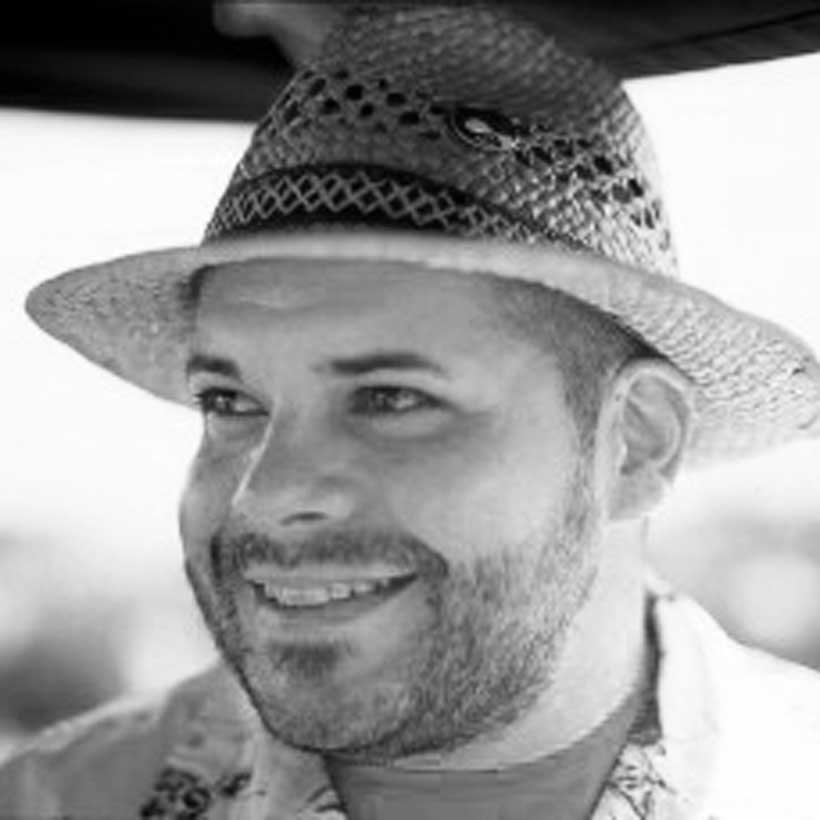
Mr. Hidalgo stands at the crossroads of technology, government, and community. He believes in participatory communities and uses technology and information to improve people’s lives. Mr. Hidalgo is known as an effective organizer who can walk between worlds. Since 2009, he has organized BetaNYC to be a driving force to improve New York City’s use of technology and share its data. BetaNYC, with over 4,900 members, has advocated for a suite of government transparency laws, including the city’s open data law and City Record online law. BetaNYC runs the New York City Civic Innovation Lab/Fellows program, in partnership with the Manhattan Borough President Gale A. Brewer, and curates the NYC School of Data conference.
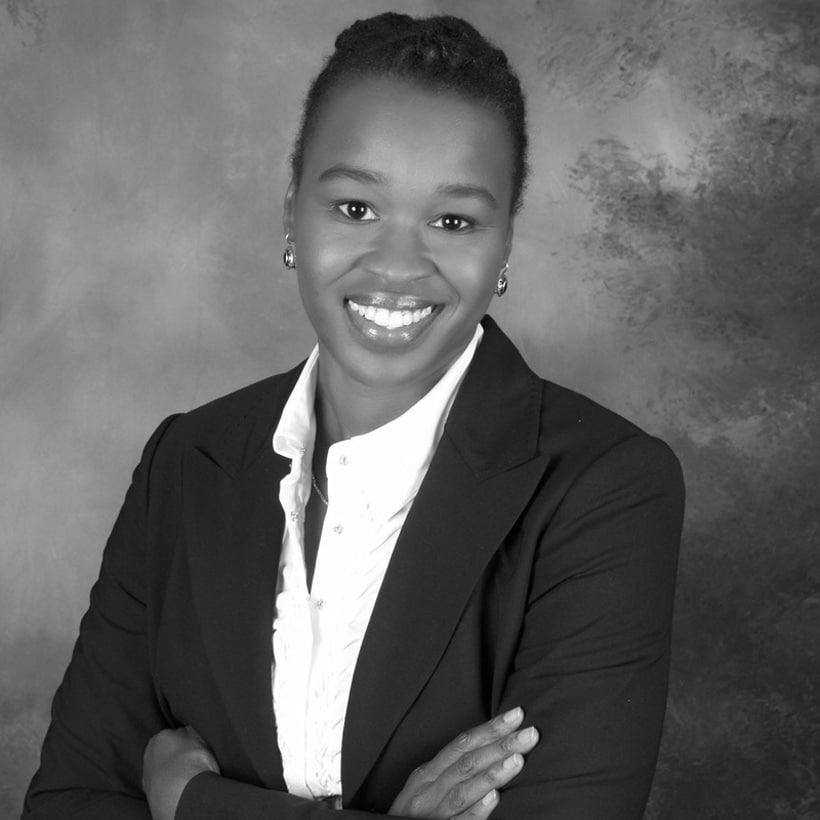
Antoinette Jackson is an Associate Professor of Anthropology at the University of South Florida (USF) in Tampa and Director of the USF Heritage Research Lab. She earned a Ph.D. in Anthropology from the University of Florida, an MBA from Xavier University in Cincinnati, and a B.A. in Computer and Information Science from The Ohio State University. Dr. Jackson completed a 4-year federal appointment as the Regional Cultural Anthropologist for the U.S. National Park Service Southeast Region in May 2016. She has led numerous research projects in communities in the US and in the Caribbean. She is Editor and Chief of the journal Present Pasts and her work on heritage has been published widely. Her book, Speaking for the Enslaved—Heritage Interpretation at Antebellum Plantation Sites, was published by Routledge in 2012. She is currently completing a new book on heritage, race, and leisure, which will be published soon by Routledge.
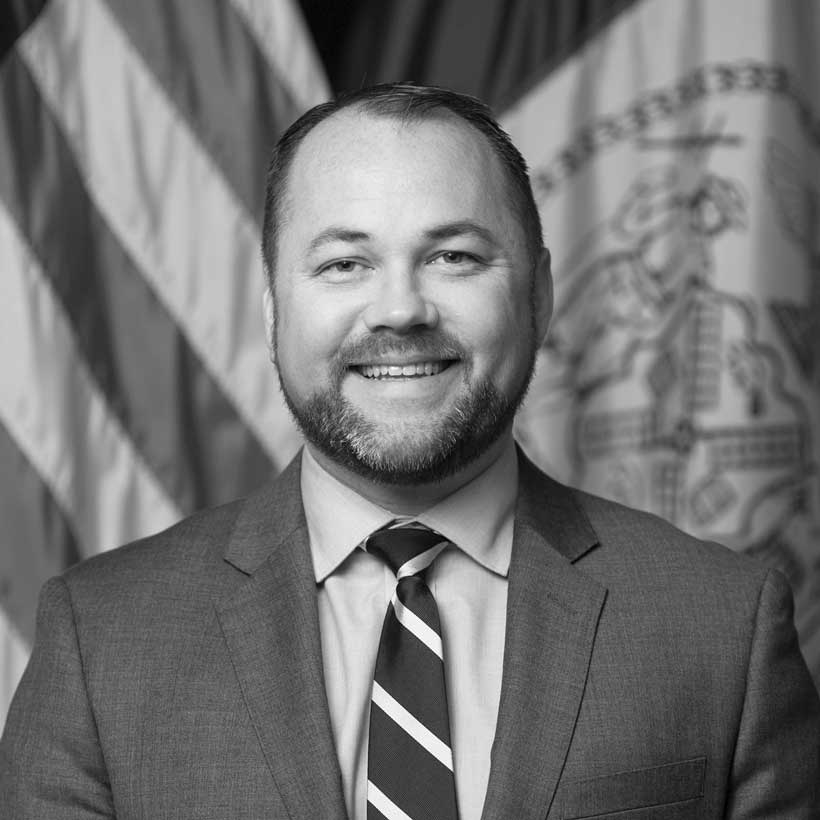
Corey Johnson was elected by his peers to serve as Speaker of the New York City Council in 2018. He was re-elected in 2017 with 94% of the vote to represent Council District 3. Raised in a union household where his mother, a homeless services provider, and his father, a Teamster, instilled in him the values of community service and political engagement, Corey came to national attention in 1999 when, as the captain of his high school football team, he took the courageous step of coming out publicly as gay. Corey’s actions landed him on the front page of The New York Times and he began telling his story to audiences of young people across the country. He would later serve as chairperson of Manhattan’s Community Board 4, becoming the youngest person to chair a community board in the five boroughs. Corey has earned a reputation as a tenacious advocate for his constituents and a prolific legislator at City Hall. He has passed dozens of pieces of legislation, standing up for tenants, victims of domestic violence, transgender New Yorkers, those involved with our criminal justice system, and more. He is a member of the Council’s LGBT Caucus and is the only HIV positive elected official in New York State.
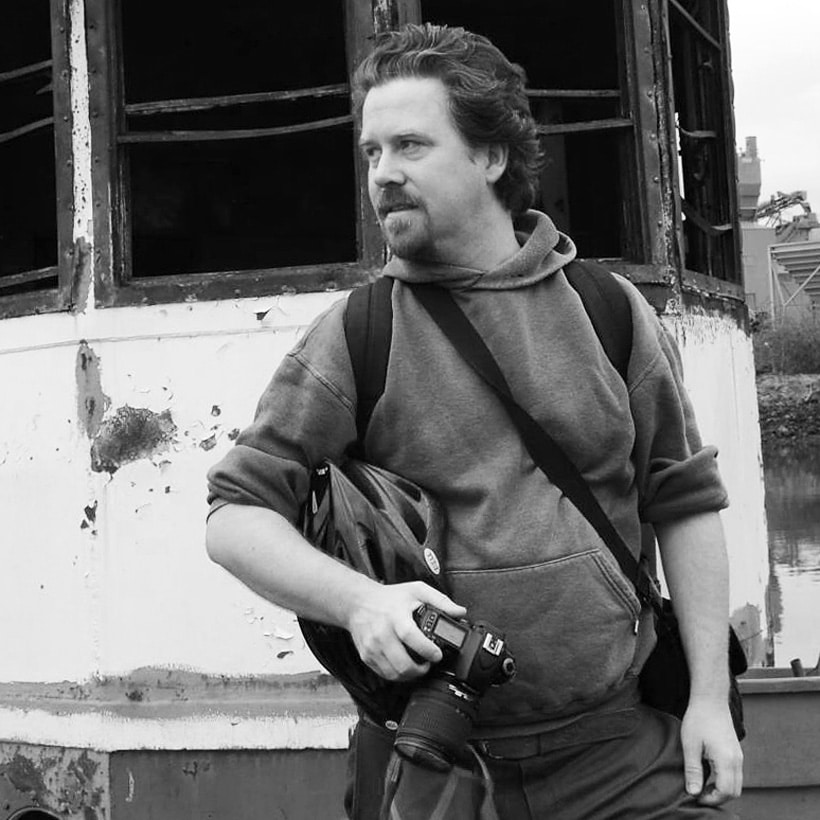
Nathan Kensinger is a photographer and filmmaker who has been documenting New York City’s changing landscape for the past 15 years. His photographs have been exhibited by the Museum of the City of New York, the Queens Museum, the Brooklyn Museum, and the Museum of Contemporary African Diasporan Arts. His Camera Obscura photo essays have also appeared on Curbed since 2012.
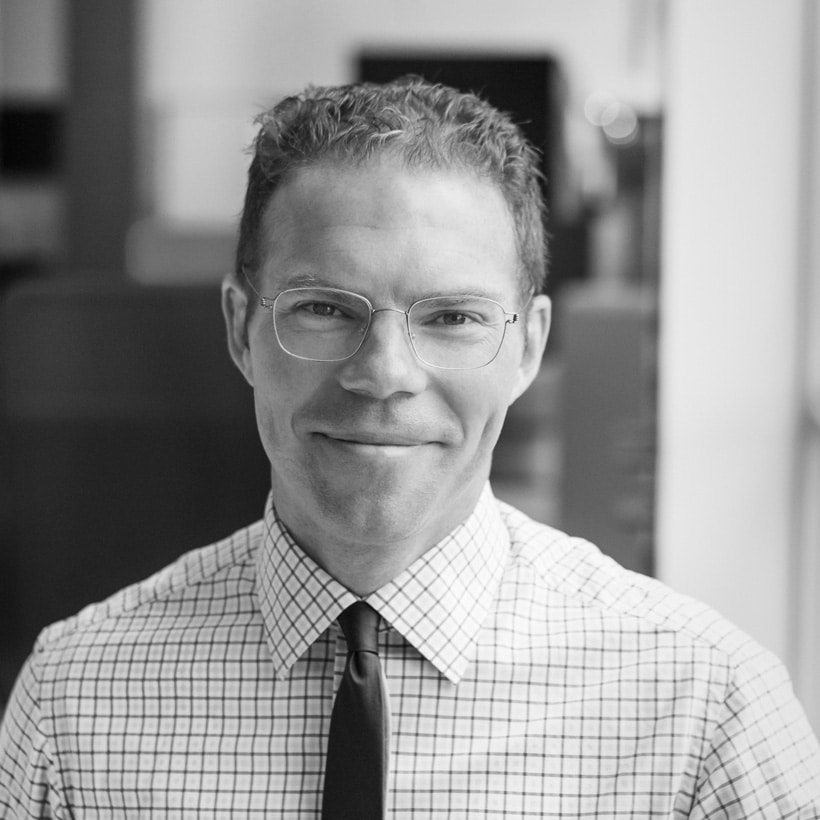
Greg Lindsay is a senior fellow at NewCities and the director of strategy of its offshoot LA CoMotion — an annual urban mobility festival in the Arts District of Los Angeles. He is also a non-resident senior fellow of the Atlantic Council’s Foresight, Strategy, and Risks Initiative, a visiting scholar at New York University’s Rudin Center for Transportation Policy & Management, a contributing writer for Fast Company, and co-author of Aerotropolis: The Way We’ll Live Next.
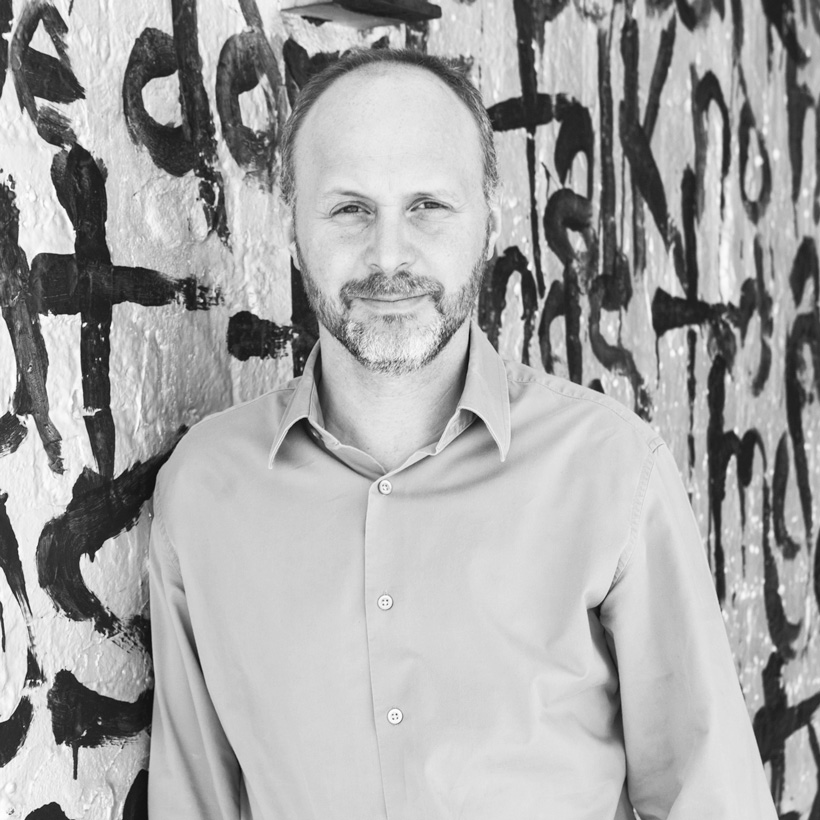
Adam Lubinsky is Managing Principal at WXY Studio. He has a background in urban design and planning, with over 15 years of experience leading large-scale plans. Adam has led major NYC projects such as the Brooklyn Tech Triangle Strategic Plan and Brooklyn Navy Yard Master Plan, and he has helped to spearhead community-based strategies, such as the East Harlem Neighborhood Plan. Adam leads WXY’s research on mobility, including projects on electric vehicle infrastructure planning, freight solutions, car share programs and integrated public realm design for NYSERDA, NYCDOT, NYSDOT, public utilities and OEMs such as the BMW Group. Adam is a Fellow of the Urban Design Forum and was named by Fast Company as one of 2017’s Most Creative People in Business. He is currently faculty at Cornell University, Columbia University and Parson The New School for Design. Adam is an accredited planner (AICP) with a Masters in Architecture and a Ph.D. in urban design and planning.
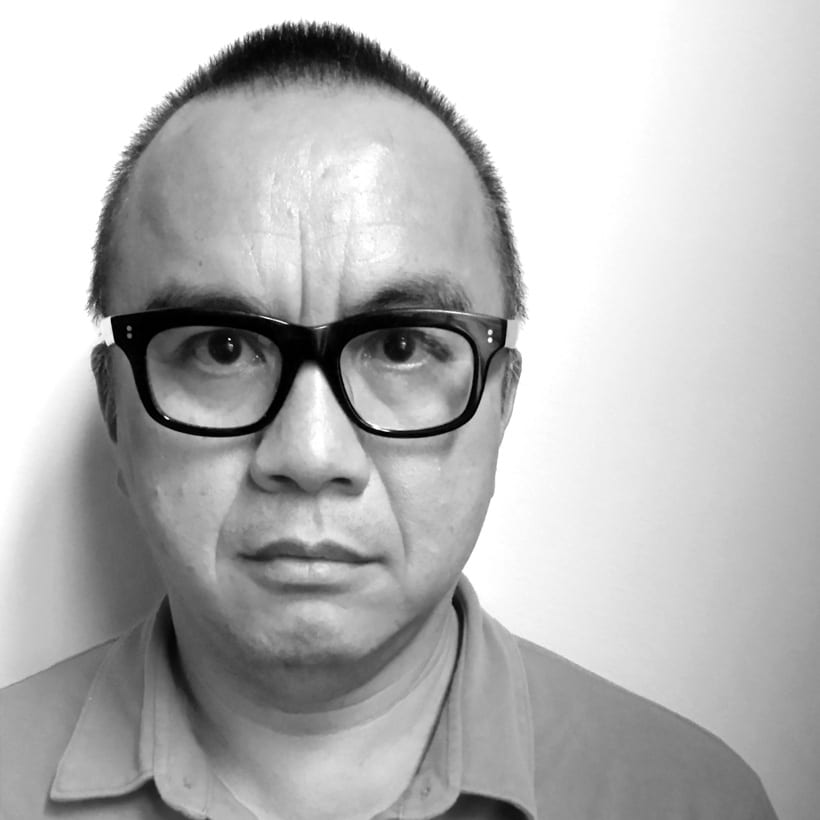
Ken Lum is Canadian born and presently residing in Philadelphia, where he is Professor and Chair of the Department of Fine Arts at the University of Pennsylvania. He is widely exhibited including many Documenta and numerous major biennales such as Whitney, Carnegie, Istanbul, Gwangju, Sao Paolo and Venice. He has won several public art commissions including for Toronto, Utrecht, Rotterdam and Vienna. A prolific writer, he has published many essays on art. He has given several keynote speeches including for the World Museums Conference in Shanghai and the Biennale of Sydney in Australia. He has also curated several large-scale exhibitions including Shanghai Modern: 1919-1945, Sharjah Biennial 7 and Monument Lab: A Public Art and History Project for city of Philadelphia.
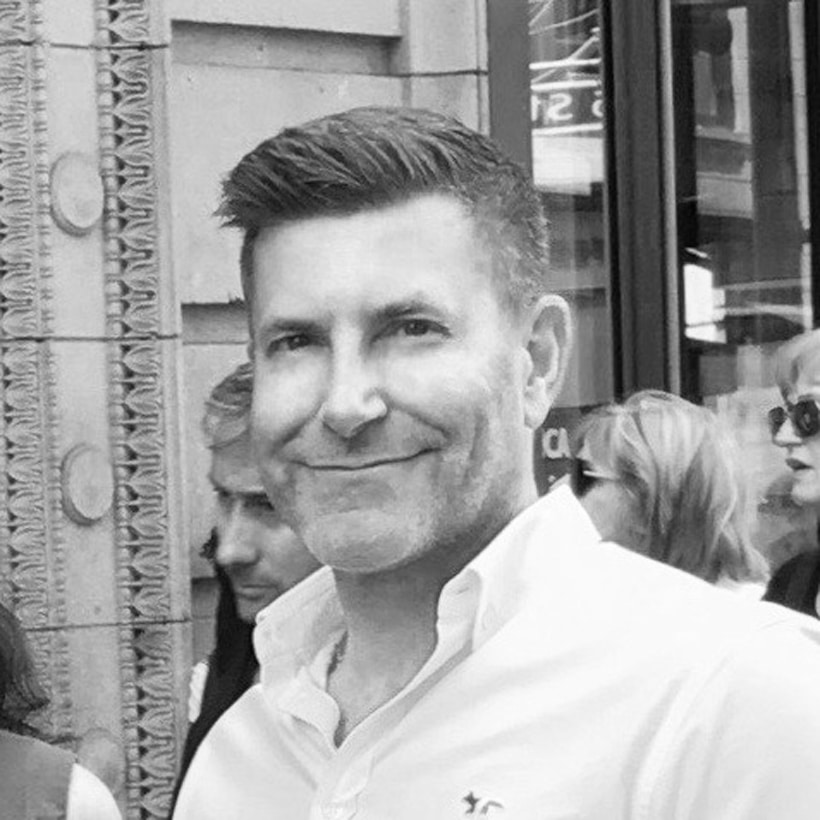
Ken Lustbader is a co-director of the NYC LGBT Historic Sites Project, the first cultural heritage initiative and educational resource to document historic sites connected to New York City’s LGBT community. A national pioneer in issues related to LGBT history, documentation, and historic preservation for over 25 years, Ken wrote his 1993 M.S. thesis for the Columbia University Historic Preservation Program on LGBT place-based history in Greenwich Village. More recently, he co-authored a walking tour brochure of LGBT sites around Stonewall National Monument. Between 2007 and 2015, he served as Historic Preservation Program Officer at the J.M. Kaplan Fund. Prior to that he was lead consultant for the Lower Manhattan Emergency Preservation Fund, which successfully campaigned for the conservation of in situ WTC elements that are now part of the 9/11 Memorial Museum. Between 1994 and 2002, he was the Director of the New York Landmarks Conservancy’s Sacred Sites Program.
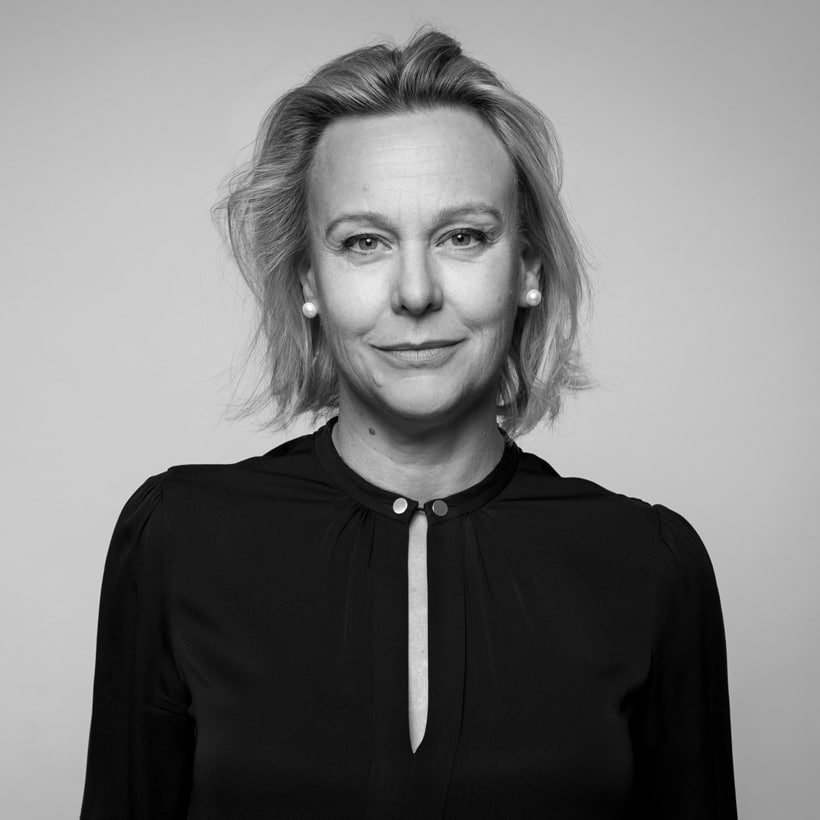
Christy is leading the restoration and adaptive re-use of an iconic historic church in Sag Harbor with the artists Eric Fischl and April Gornik – making this the third major project focused on art, legacy and preservation. Prior positions included being the inaugural CEO of the Robert Rauschenberg Foundation which included the adaptive reuse of the artist’s 45 acre campus of homes and studios into an artist residency; and the founding Executive Director of the Philip Johnson Glass House where she converted the 47 acre estate into a vibrant public site. She lead the relocation of Lake Shore Drive in Chicago to create a lake front park and as a business strategist for Disney’s Celebration project. She holds a degree in Urban Design and Architectural History from Stanford and an MBA in Real Estate Finance from Wharton. Beyond her service as the Board Chair of MAS, she is also on the Board of Trustees of Stanford University.
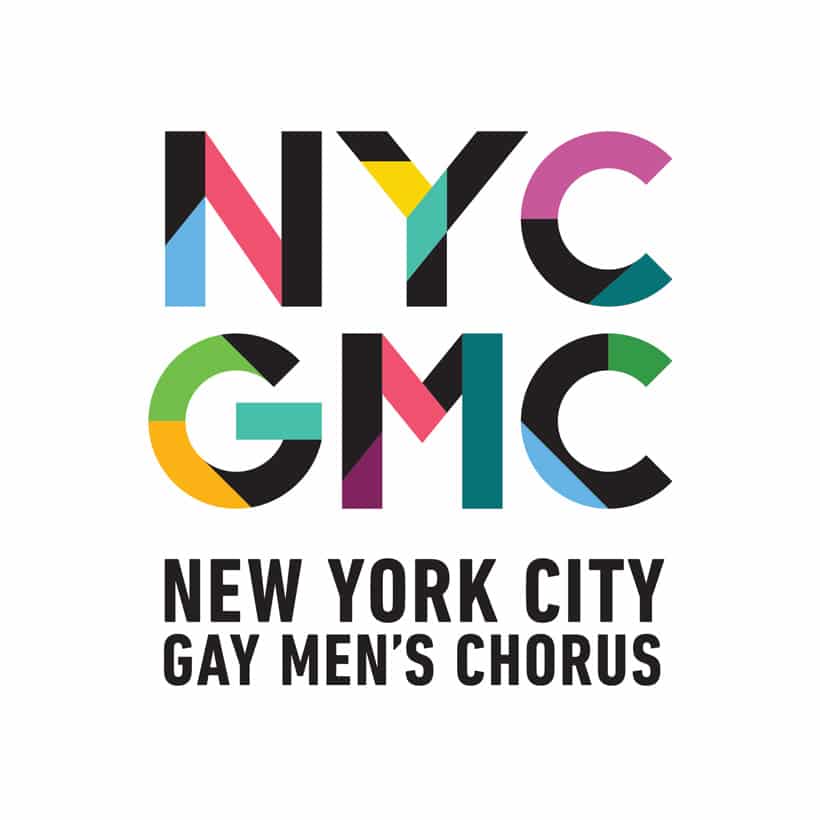
New York City Gay Men’s Chorus (NYCGMC) is a pioneering voice for LGBTQ communities in NYC, the US and internationally; through music, they are fearless champions for LGBTQ rights and social justice. Founded in 1979, NYCGMC is comprised of over 275 talented singers of various ages, backgrounds, and experiences, across a spectrum of gender identity and sexual orientation. The Chorus sings in every style from classical to pop, Broadway to gospel, and from cultures all over the world. With 3 mainstage shows and over 40 outreach activities across all five boroughs and beyond, NYCGMC reaches thousands of audience members annually, including school programs that engage over 2,000 NYC students. NYCGMC has performed with an amazing array of artists including Elaine Stritch, Joan Rivers, Stephen Sondheim, Kelli O’Hara, Alan Cumming, and the New York Philharmonic—to name just a few – and appeared on television on Good Morning America, The Tonight Show, and Last Week Tonight.
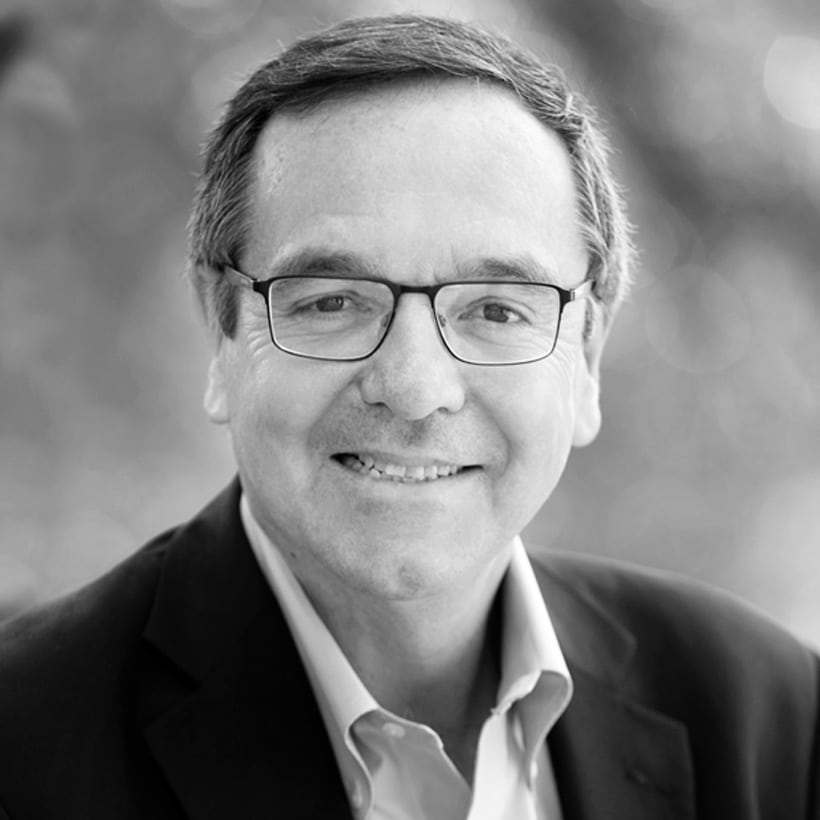
Gil Penalosa is passionate about creating cities for all people; vibrant cities and healthy communities for everyone regardless of age and social, economic, or ethnic background. Gil is the founder and chair of the internationally recognized Canadian non-profit organization 8 80 Cities. Before immigrating to Canada, Gil was Commissioner in Bogota. He holds an MBA from UCLA’s Anderson School of Management, where he recently was selected as one of the “100 Most Inspirational Alumni” in the school’s history. In 2015 Gil received a Doctorate Honoris Causa from the Faculty of Urban Planning at the prominent University of Sweden, SLU. Last year Gil was listed in Planetizen’s Top 100 Most Influential Urbanists.
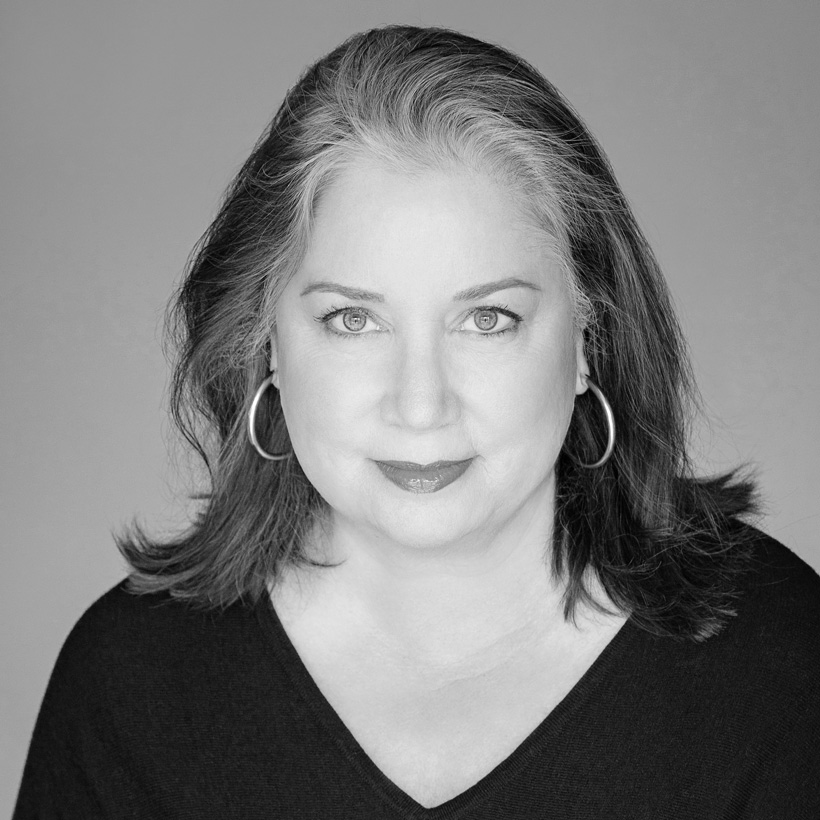
As Director of the Greater Des Moines Public Art Foundation, Rowe spearheads the public art program. During her previous tenure leading institutions including the Blanden Memorial Art Museum and Des Moines Art Center, she led institutional change and mission-building agendas, organized major art exhibitions, and advanced negotiations that enabled art of our times to be integrated into public space. Her work with American artists Kerry James Marshall, Jun Kaneko, Mickalene Thomas, Benjamin Ball and Gaston Nogues, Richard Serra, Bruce Nauman, Red Grooms, and Mary Miss has resulted in major art commissions, most recently being Kerry James Marshall’s “A Monumental Journey,” unveiled in July 2018 to honor the National Bar Association founders: 12 courageous African-American attorneys who — in Des Moines, IA — changed the course of American history in 1925.
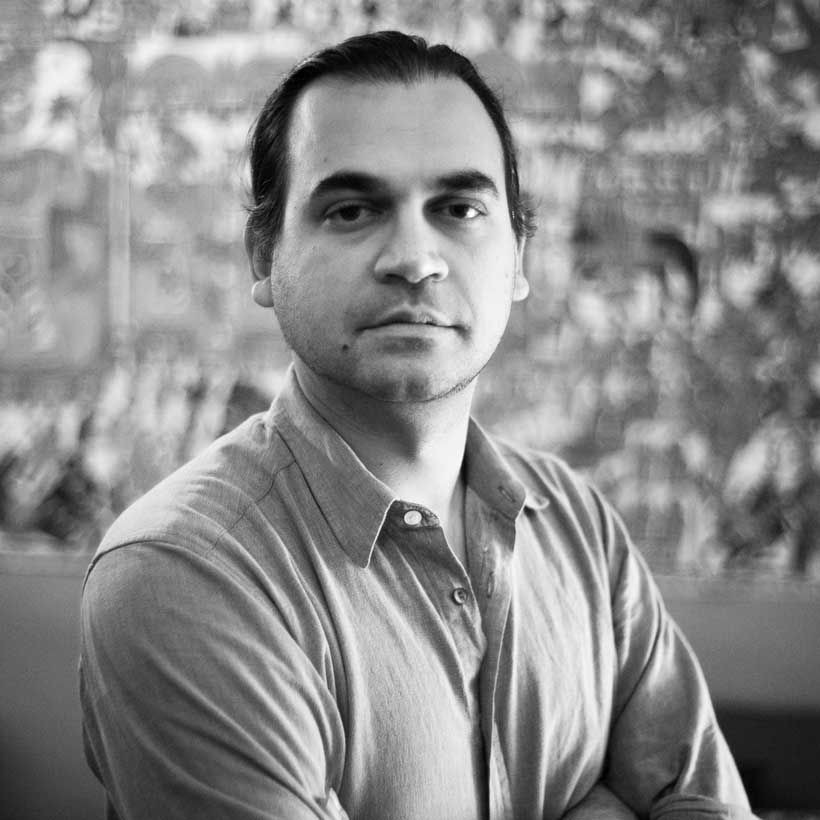
Cassim Shepard writes and makes films about cities, buildings and places. Trained as an urban planner, geographer, and documentary filmmaker, Shepard served as the founding editor-in-chief of Urban Omnibus, an online publication of The Architectural League of New York. His film and video work has been commissioned by and screened at the Venice Architecture Biennale, the Cooper-Hewitt Smithsonian Design Museum, and the United Nations, among many other venues around the world. He teaches in the Urban Design program at Columbia University’s Graduate School of Architecture, Planning and Preservation, and has been a guest lecturer in the Cities Programme of the London School of Economics and a Poiesis Fellow at the Institute for Public Knowledge at New York University.
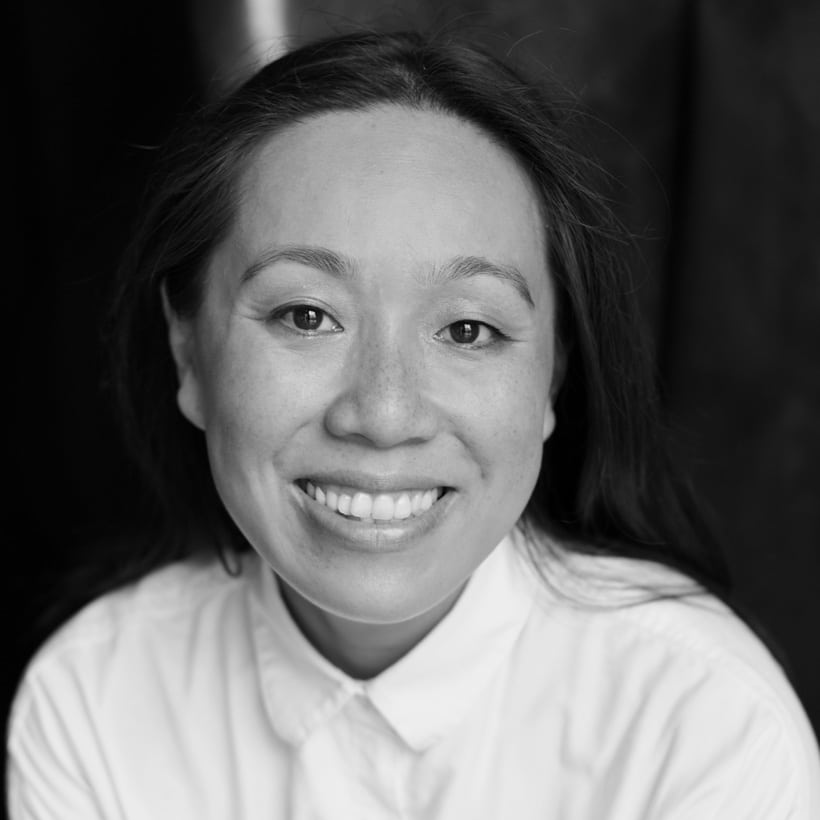
Shin-pei Tsay is the Executive Director of Gehl institute, whose mission is to transform the way cities are shaped by making public life an intentional driver for design and policy. Previously, Shin-pei served as Deputy Executive Director at TransitCenter; founded and directed the Cities and Transportation Program at the Carnegie Endowment for International Peace; and served as Deputy Director of Transportation Alternatives, Chief Operating Officer of Project for Public Spaces, and ZGF Architects. Shin-pei is on the Board of In Our Backyards and Transportation Alternatives, and is a Commissioner for the Public Design Commission of New York City. Shin-pei holds a MSc in Cities, Space and Society from London School of Economics and a BA with distinction from Cornell University.
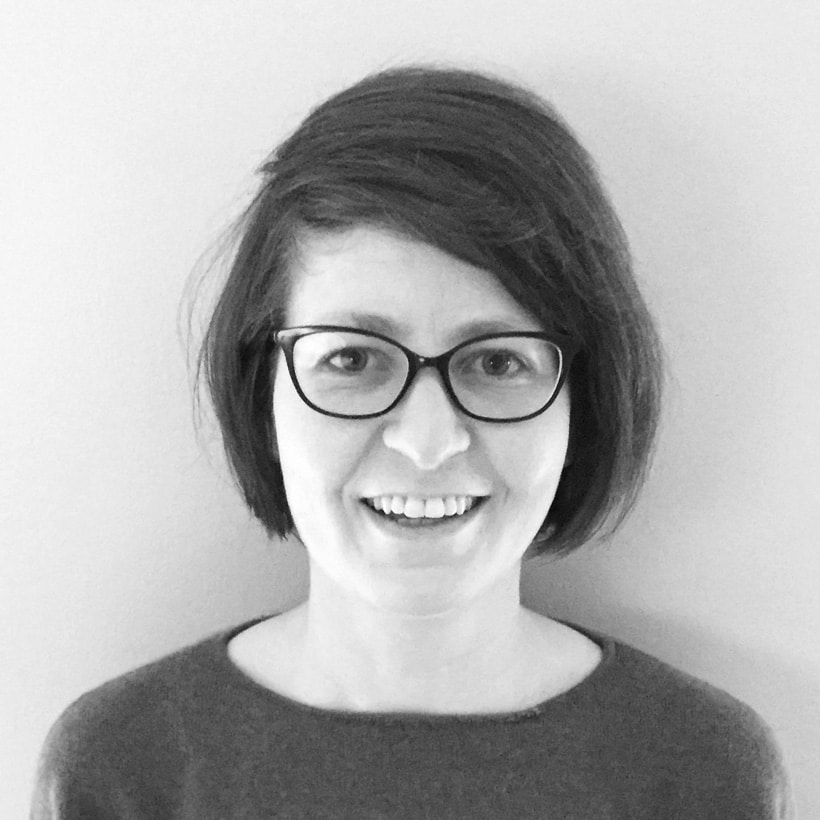
Sabina Uffer is a social scientist leading projects at the intersection of urban development and infrastructure planning for public and private sector clients. Her expertise includes project management, strategic consulting, and workshop facilitation for resiliency, economic development, infrastructure, and mobility projects. Most recently, she led an initiative running “design sprints” with car manufacturers, technologists, urban planners and designers, and policy makers to better understand the potential impacts of connected and autonomous vehicles on cities across the globe. Before joining BuroHappold, she worked at the research institute LSE Cities in London. She has a Ph.D. in Urban and Regional Planning from the London School of Economics and Political Science and a Master’s degree in political science from the University of Geneva.
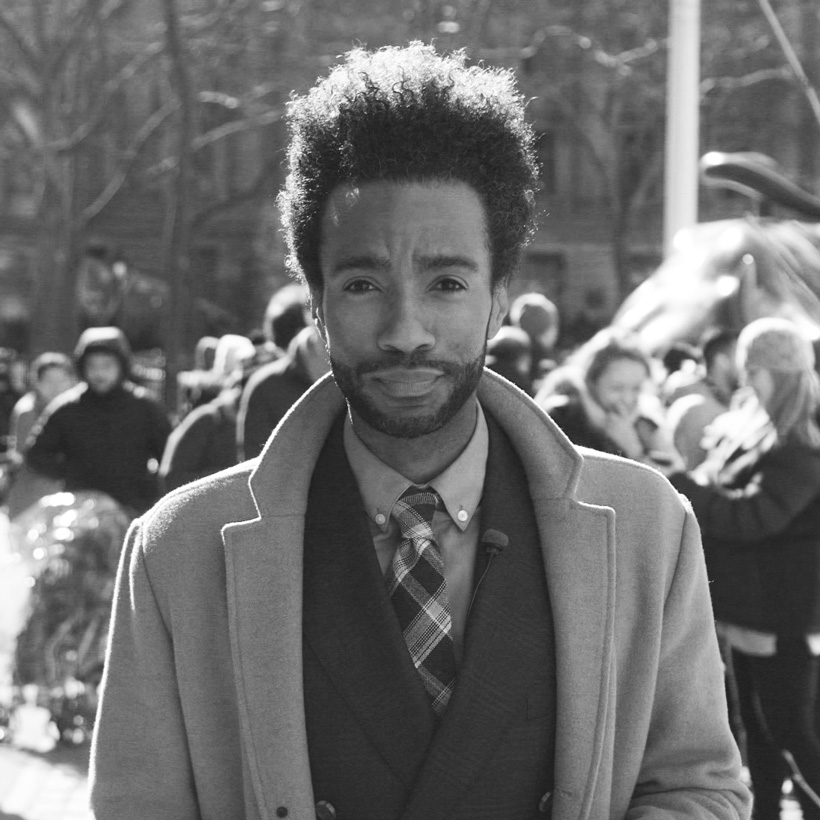
Brian Vines is an Emmy Award winning journalist and the Senior Correspondent at BRIC-TV, where he moderates the #BHeard Town Hall series on social justice and hosts, “Going In With Brian Vines”. He worked with some of the most respected journalists and news figures in the world during his tenure at CNN, and reported for Here TV! networks, NYC-TV, and the Guardian US among others.
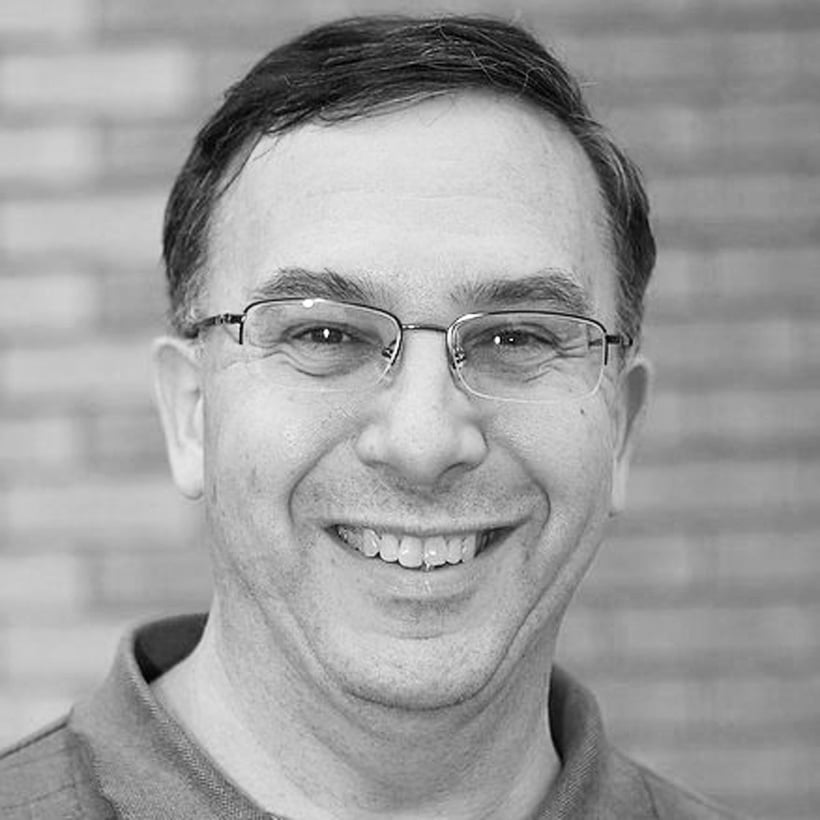
Bernie Wagenblast was one of the original Shadow Traffic reporters in New York City in 1979 and was heard on stations such as Musicradio 77 WABC and 1010 WINS. After his accidental introduction to the world of transportation as a traffic reporter he worked on transportation in the public sector, first with NYCDOT as they established their communications center in Long Island City, and then with the Port Authority as part of TRANSCOM. Since 2009 he can be heard in the NYC subway system as the voice of the countdown clocks on the 1-6 lines and the Times Square Shuttle, as well as on the AirTrain at Newark Airport and PATCO in Philadelphia and South Jersey. He’s the editor of several transportation e-publications, including the Transportation Communications Newsletter and the AASHTO Daily Transportation Update.
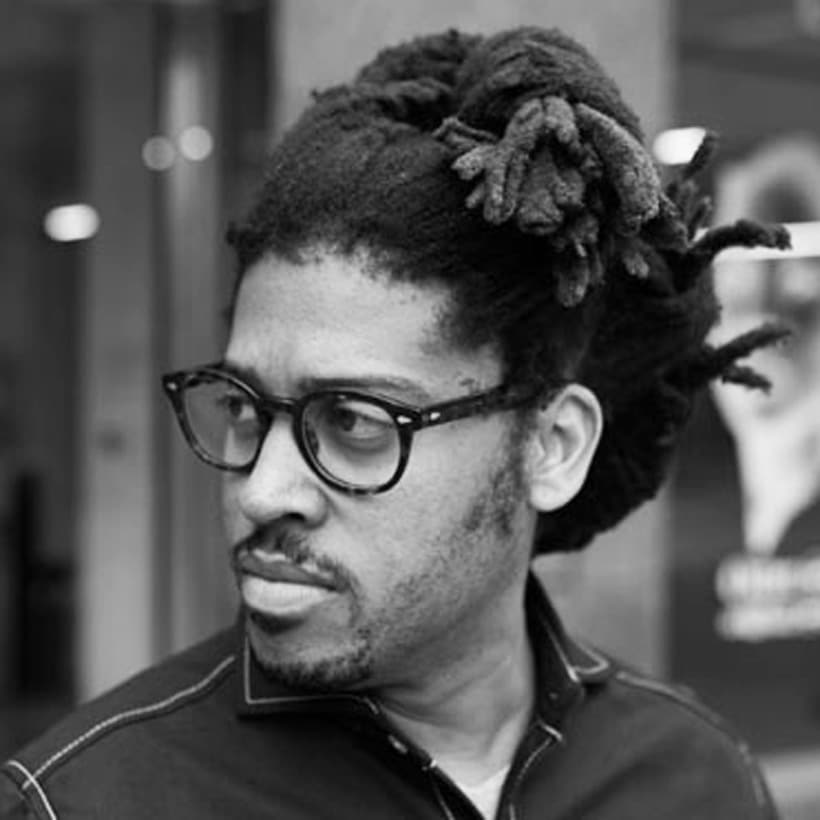
Kamau Ware is a multidimensional creative blending complementary yet disparate disciplines as an Artist/Historian. He is best known for his flagship storytelling project, Black Gotham Experience (BGX), a visual storytelling project founded in 2010 that celebrates the impact of the African Diaspora on New York City through a series of walking tours and graphic novels. Kamau’s Black Gotham Experience has been recognized by The Atlantic and The New York Times, Columbia University’s History in Action Project Award and Lower Manhattan Cultural Council. Ware has also received prominent commissions, including a public art display in New York City’s Financial District. Recent engagements include the American Association for State and Local History Annual Meeting in Austin, TX and the New Museum’s Ideas City in New York, NY.
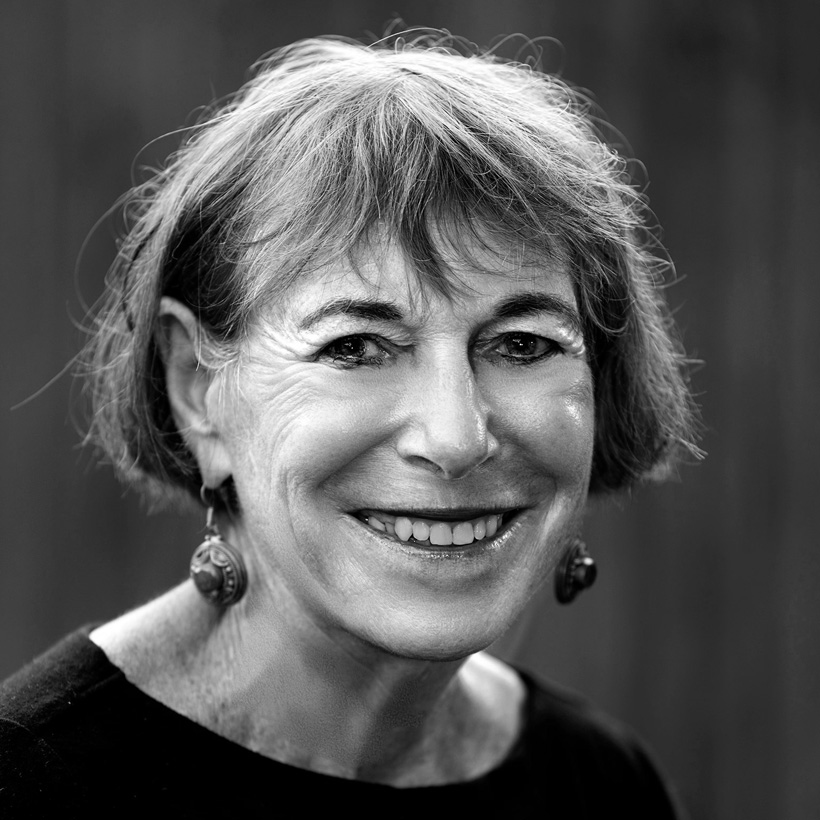
Currently Co-Director of the community mural organization Artmakers Inc, Jane Weissman served as Director of GreenThumb, NYC’s community gardening program (1984-98). Jane curated the exhibition La Lucha Continua The Struggle Continues: 1985 & 2017, and is co-author of the cultural history, On the Wall: Four Decades of Community Murals in New York City (University Press of Mississippi). Following its publication, she curated the exhibition Images of the African Diaspora in New York City Community Murals, most recently on view at the American Library in Paris and the West African Research Center in Dakar. As GreenThumb’s Director, she commissioned 10 murals and 12 sculptures for its gardens through its Artists in the Gardens program. She curated the traveling exhibition City Farmers and compiled two oral histories: “Tales from the Field I” and “Tales from the Field II.” Jane frequently lectures on community murals, Mexico’s Rivera, Siqueiros and Orozco, and 1970s Land Art.
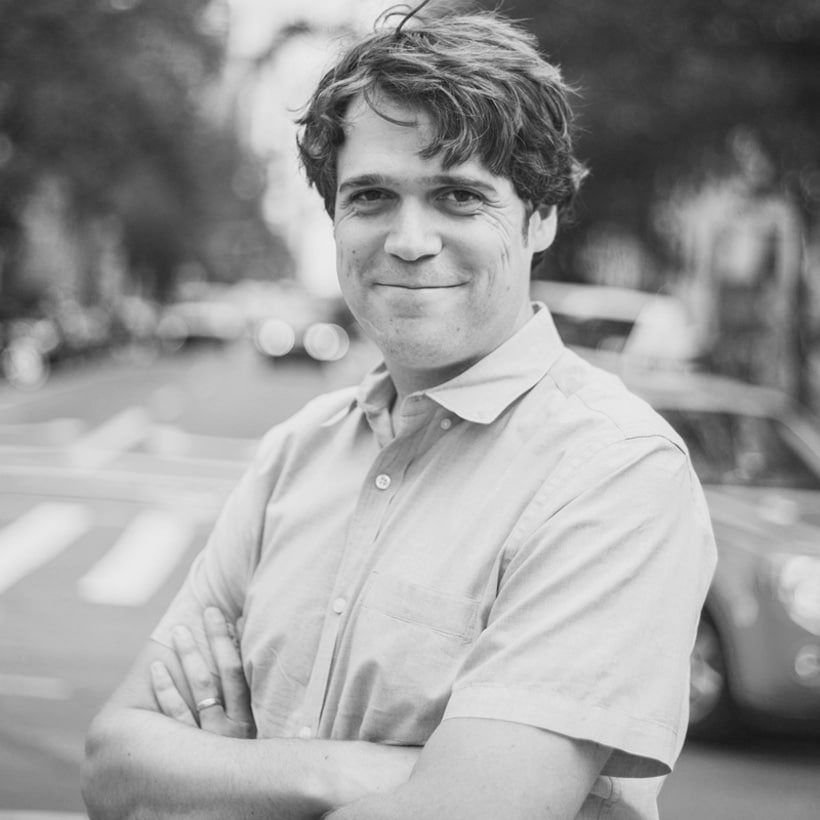
Ben Wellington is the creator of I Quant NY, a data science and policy blog that focuses on insights drawn from New York City’s public data, and advocates for the expansion and improvement of that data. His data science and story-telling has influenced government policy including changes in street infrastructure, the training of police officers, the way New Yorkers pay for cabs and the design of NYC subway vending machines. Ben is a Visiting Assistant Professor in the City & Regional Planning program at the Pratt Institute in Brooklyn where he teaches statistics using urban open data. He works as a quantitative analyst at the investment management firm Two Sigma, where he helped start the firm’s Data Clinic, a pro bono data analysis program that works with non-profits to harness the power of their own data. Ben holds a Ph.D. in Computer Science from New York University.
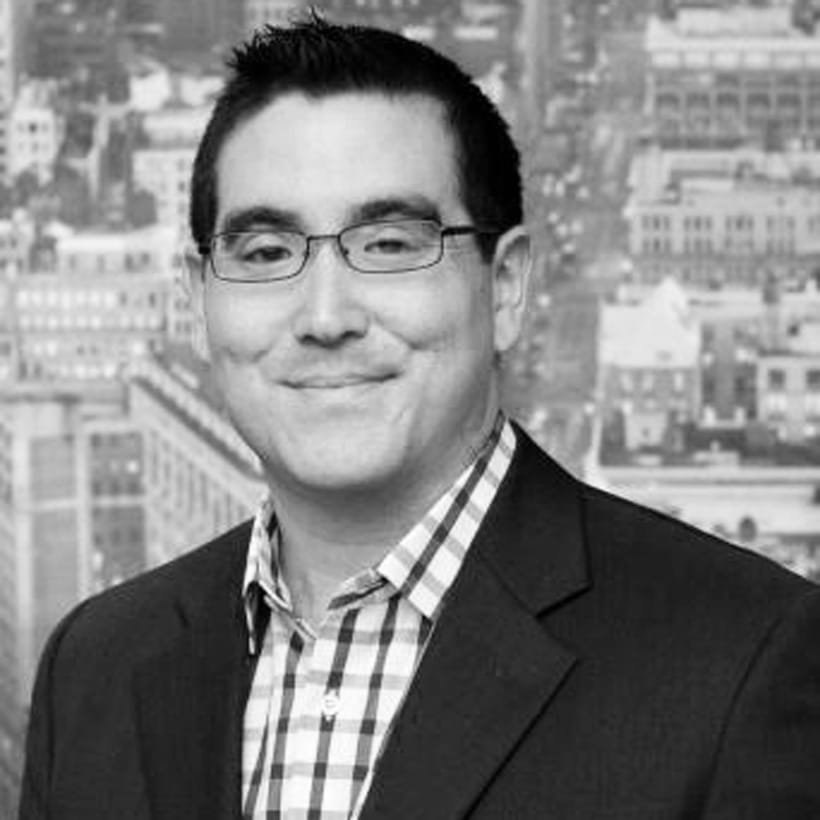
Chris Whong is an urbanist, mapmaker, data junkie, and full-stack web developer. As Founder and Director of the progressive technology team NYC Planning Labs, he promotes the use of agile methods, human-centered design, and open technology to build impactful tools at the NYC Department of City Planning. Chris is a leader in the NYC civic technology community, and a former Code for America brigade leader. He holds a Master of Urban Planning from NYU Wagner, and a BS in Geography from the University of Maryland.
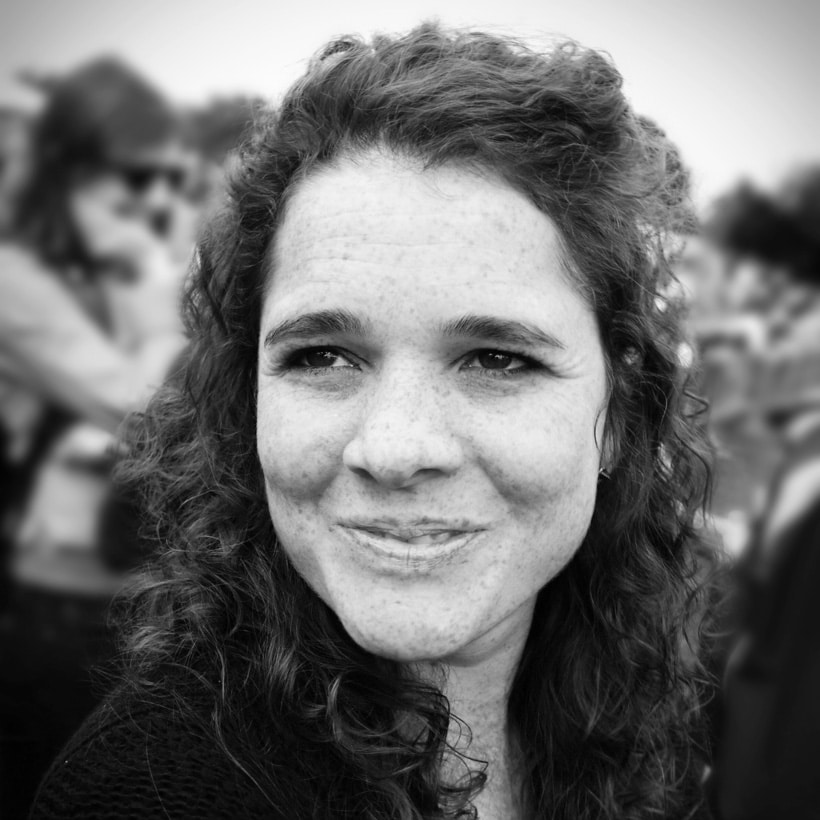
Sarah Williams is an Associate Professor of Technology and Urban Planning at MIT’s School of Architecture and Planning where she also directs the Civic Data Design Lab. She is also Co-Founder of Envelope, a real estate software which allows you to interactively develop your zoning envelope. The Civic Data Design Lab works with data, maps, and mobile technologies to develop interactive design and communication strategies that expose urban policy issues to broader audiences. Trained as a Geographer, Landscape Architect, and Urban Planner, Williams’ work combines geographic data analysis and design. Before coming to MIT, Williams was Co-Director of the Spatial Information Design Lab at Columbia University’s Graduate School of Architecture Planning and Preservation (GSAPP). Her design work has been widely exhibited including the Guggenheim, the Museum of Modern Art (MoMA), and the Cooper Hewitt Museum in New York City.
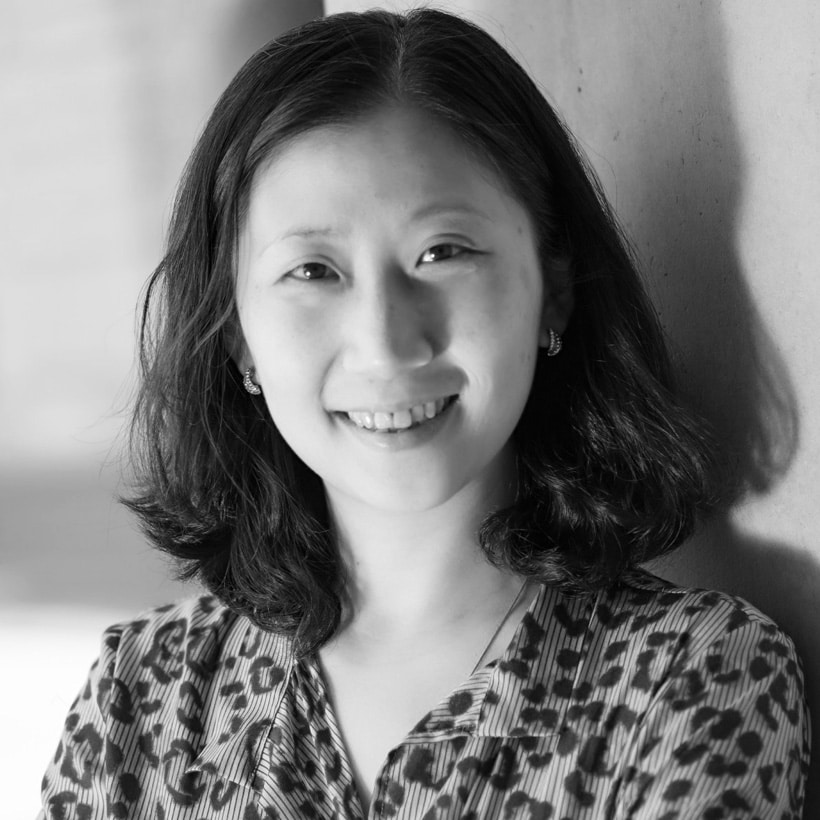
Jie Wu is the Director of Research Operation at Rice University’s Kinder Institute for Urban Research. She leads the Houston Community Data Connections, a program aimed to facilitate the practical use of data by city and community leaders for decision-making and capacity building in Houston’s disadvantaged communities. She also supervises the Urban Disparity and Opportunity and the Community Bridges programs, and manages the Kinder Houston Area Survey. In addition, she serves on the oversight committee for the Kinder Urban Data Platform. Wu has published a series of reports on survey findings and urban inequality. She is a member of the American Association for Public Opinion Research and the Community Indicators Consortium. Her research interest focuses on public opinion, social mobility and immigration. She holds a master’s degree in economics from Rice University and a bachelor’s degree in economics from Shanghai International Studies University.
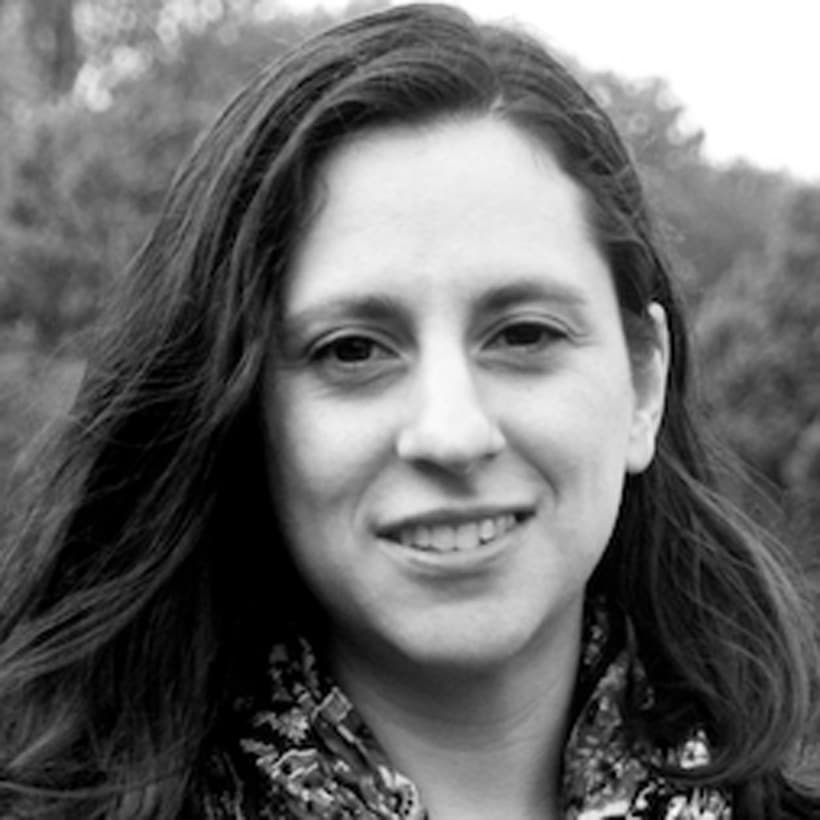
An award-winning journalist, Amy brings a wealth of experience researching and reporting on real estate in New York City. She helps ensure Localize.city tells the full-story of every home in New York City, in addition to broader stories about the city. Most recently, she was DNAinfo’s lead journalist overseeing real estate and education throughout New York. Amy earned a BA in anthropology from Yale University and a Master’s degree in journalism from NYU.
Innovation Exhibition
2018 Innovation Exhibition
In line with the 2018 theme, the MAS Urbanist Innovation Exhibition Jury selected eight advocacy and civic engagement projects that creatively empower individuals to shape their built environment.
Another Country
By The James Baldwin Outdoor Learning Center
The James Baldwin Outdoor Learning Center, designed by Marpillero Pollak Architects, transforms the grounds of DeWitt Clinton High School into a destination for learning, growing, health, and community, connected by accessible trails. In the “Community Hub,” neighbors will engage in permaculture practices. The “School Hub” will be a versatile education and garden space including the “Welcome Table.” We envision a model community school that inspires resiliency, sustainability, and personal responsibility.
Intersection@theCornerstore: Identity and Place
By 3×3 Design and the Flatbush Junction BID
Initiated to bridge communities in a neighborhood undergoing change, a multimedia and participatory art project narrates the personal journeys of ten small business owners through collaboration with artists and students in Flatbush, Brooklyn. A virtual art walk prompts reflection on how small businesses shape neighborhood cultural identity and vitality.
Monument Lab: Virtual Reality Tour
By Monument Lab
Monument Lab is a public art and history initiative based in Philadelphia. Composed of a curatorial team led by Paul Farber and Ken Lum, they ask open research questions and build prototype monuments in public spaces. Through their practice, they cultivate contemporary artworks, generate publicly sourced civic data, and co-author interpretive experiences. Project goals: to unearth the next generation of monuments and change the ways we write the history of cities together.
New York City Nature Goals 2050 (NYC2050)
By Natural Areas Conservancy
New York City Nature Goals 2050 (NYC2050) is a citywide coordinated network of groups and organizations working locally and citywide for environmental action and justice. NYC2050’s 25 targets are a superstructure to frame nature activism and stewardship in NYC and to bring groups together to create solidarity. As an organized network, they coordinate and advance collective action for nature-based solutions to culture, policy, and infrastructure.
“Opening the Edge”
By Design Trust for Public Space, in partnership with New York City Housing Authority; proposed by Jane Greengold; © 2018 Design Trust
“Opening the Edge” engages NYCHA residents and their neighbors in redesigning a now fenced, unusable grass space at the edge of Wald Houses in Lower East Side, to make it a lively public space, usable by both residents and neighbors. It directly empowers its participants to work together to shape their environment.
Planning to the People: Web Tools for Public Engagement
By Kohn Pedersen Fox Associates, PC (KPF)
At KPF, they’re working to make the master planning process more accessible. They’ve built a web app, called Scout, and a twitter bot, @KPFCityBot, that allow anyone to create their own neighborhood and see how it performs according to numerous metrics. Interacting with planners becomes as simple as clicking “like”.
Resilient By Design—South Bay Sponge
By James Corner Field Operations
Developed as part of the Resilient by Design initiative, the South Bay Sponge explores how green infrastructure on a large scale can protect cities in the face of climate change and sea level rise, as well as improve their social fabric and collective well-being, leading to more resilient urbanism.
streetmix-illustration-pano
By streetmix-illustration-pano
streetmix-illustration-pano is a platform that brings urban planners and community members together to design cities collaboratively. Think of it like a multiplayer SimCity: a friendly virtual world that helps city planners design safer, more equitable real-world places. With streetmix-illustration-pano, city-building becomes inclusive, empowering, and accessible.
Urbanist Innovation Exhibition Jury
Jennette Cheung, Two Twelve
Matthew Coody, Historic House Trust of New York City
Brennan Corriston, Tufts University
Gabriel Halili, Hester Street
Rachel Levy, Friends of the Upper East Side Historic Districts
Liz McEnaney, Sir John Soane’s Museum Foundation
Cristiana Peña, Digital Media Strategist
Jim Shelton, Manhattan Community Board 3
Supporters
Hon. Cory Booker
Santiago Calatrava
Roz Chast
David Childs
Justin Davidson
Dan Doctoroff
Susannah C. Drake
Helena Rose Durst
Ingrid Gould Ellen
Norman Foster
Alicia Glen
Adam Gopnik
Michael Kimmelman
Fran Lebowitz
Damon Rich
Judith Rodin
Janette Sadik-Khan
Hon. Charles E. Schumer
Richard Sennett
